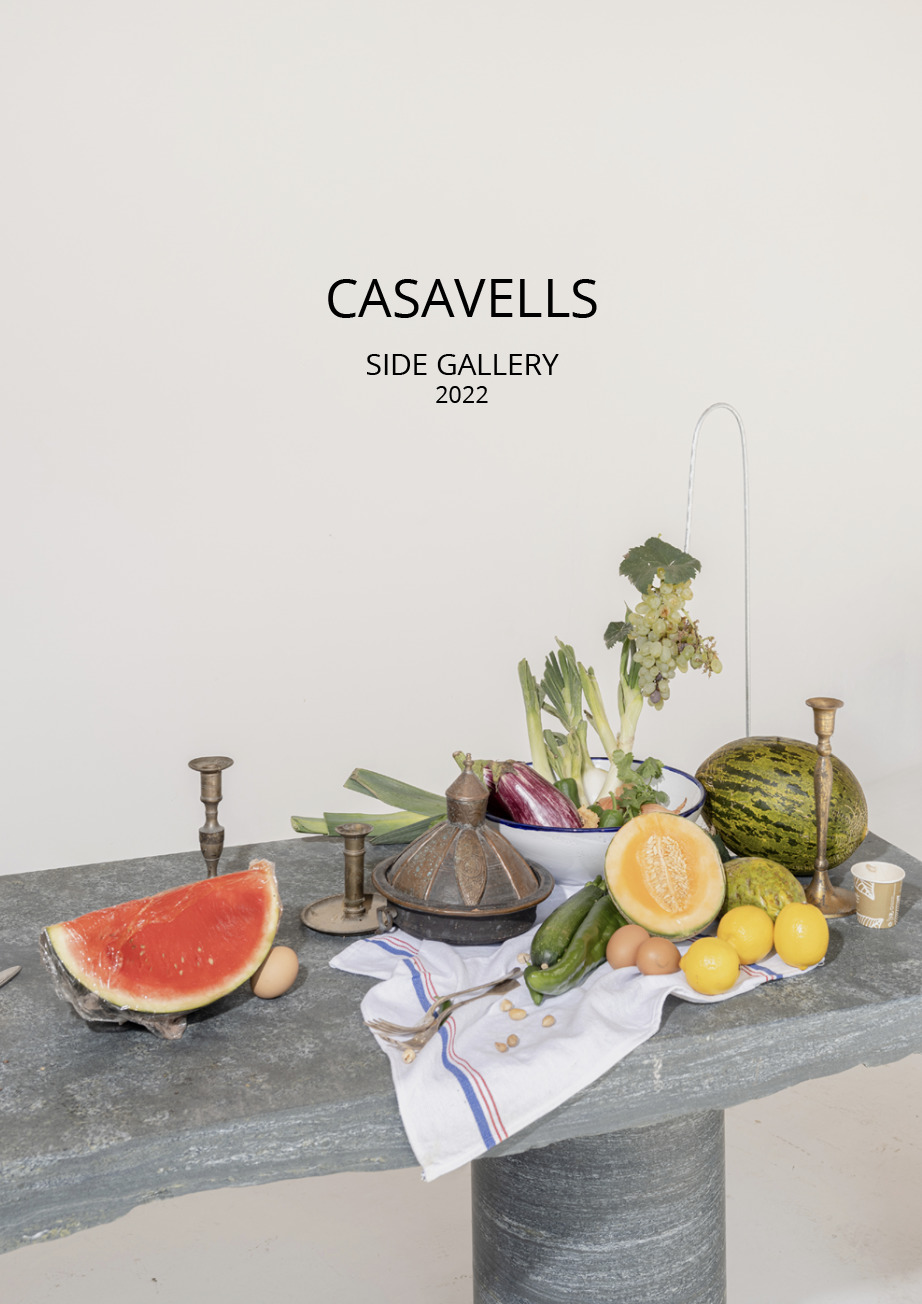Side Gallery
Side Gallery
WishlistFollow
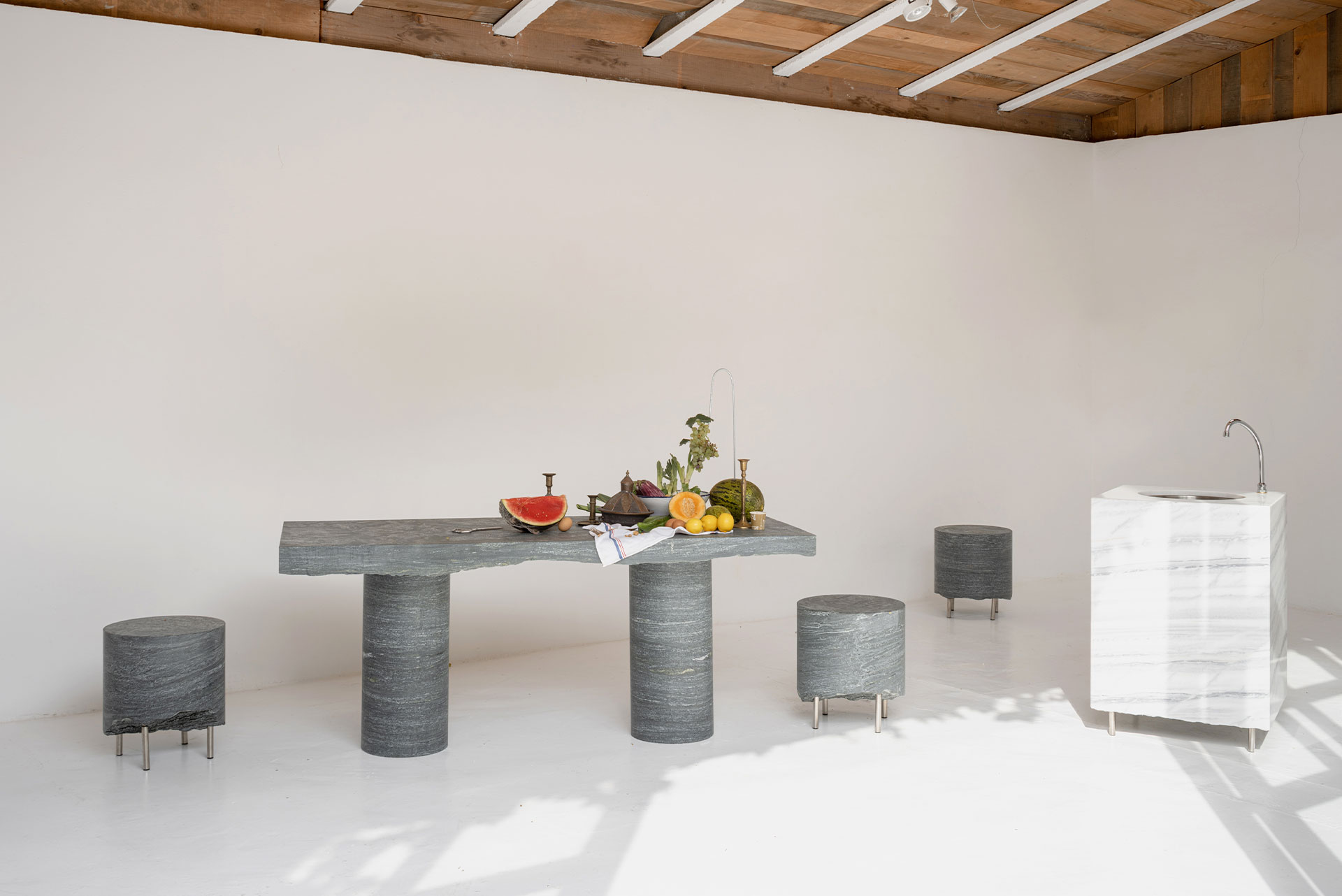
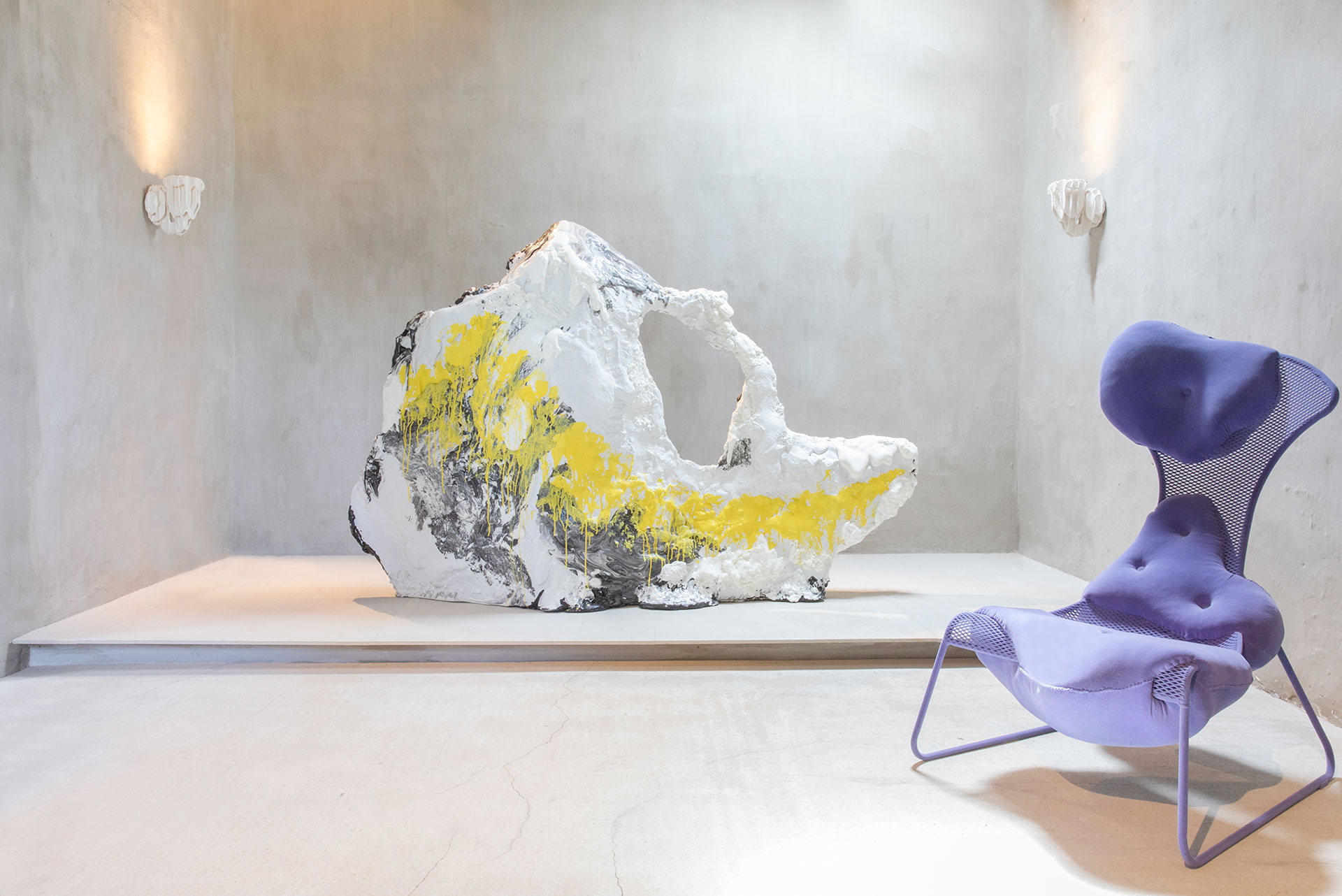
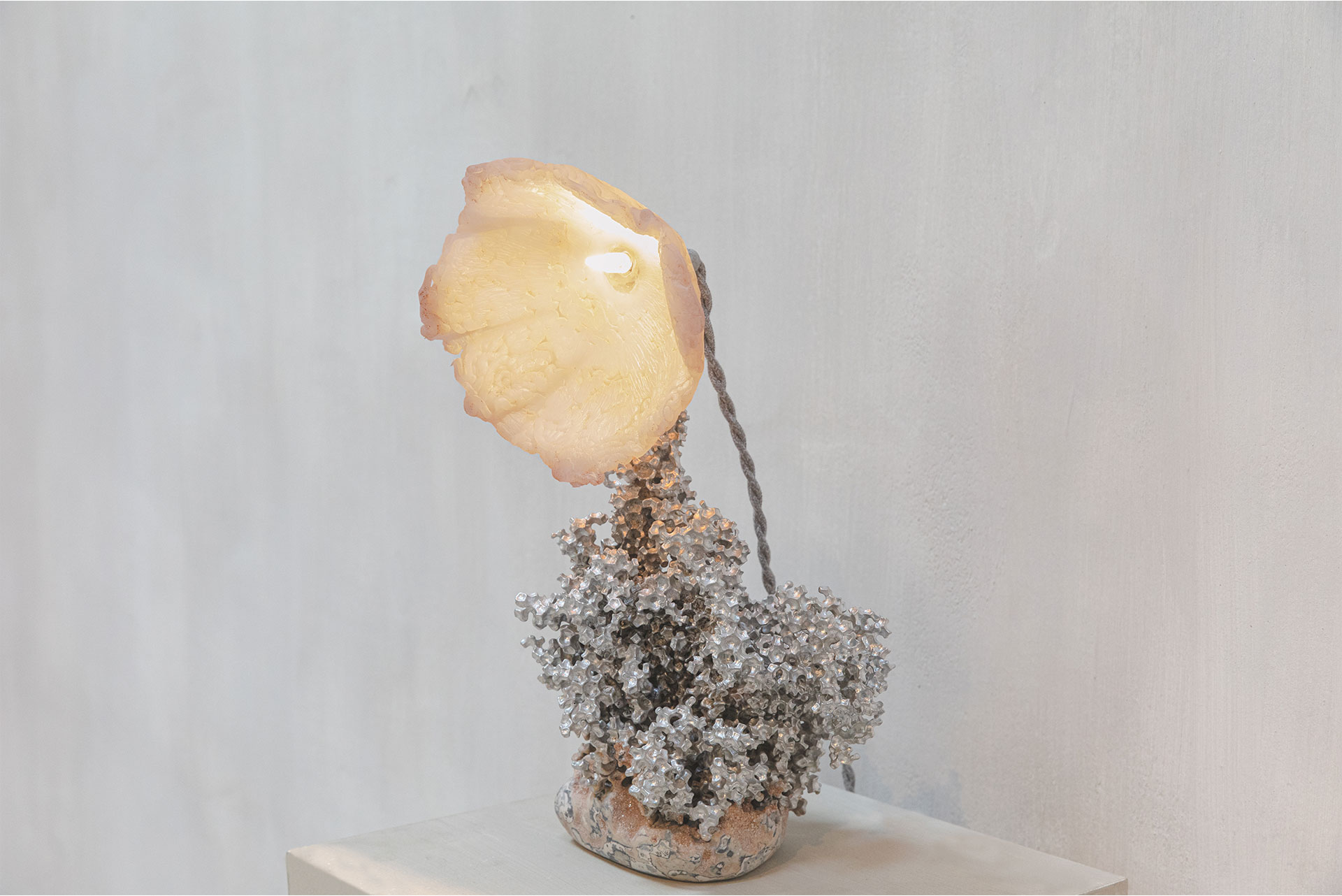
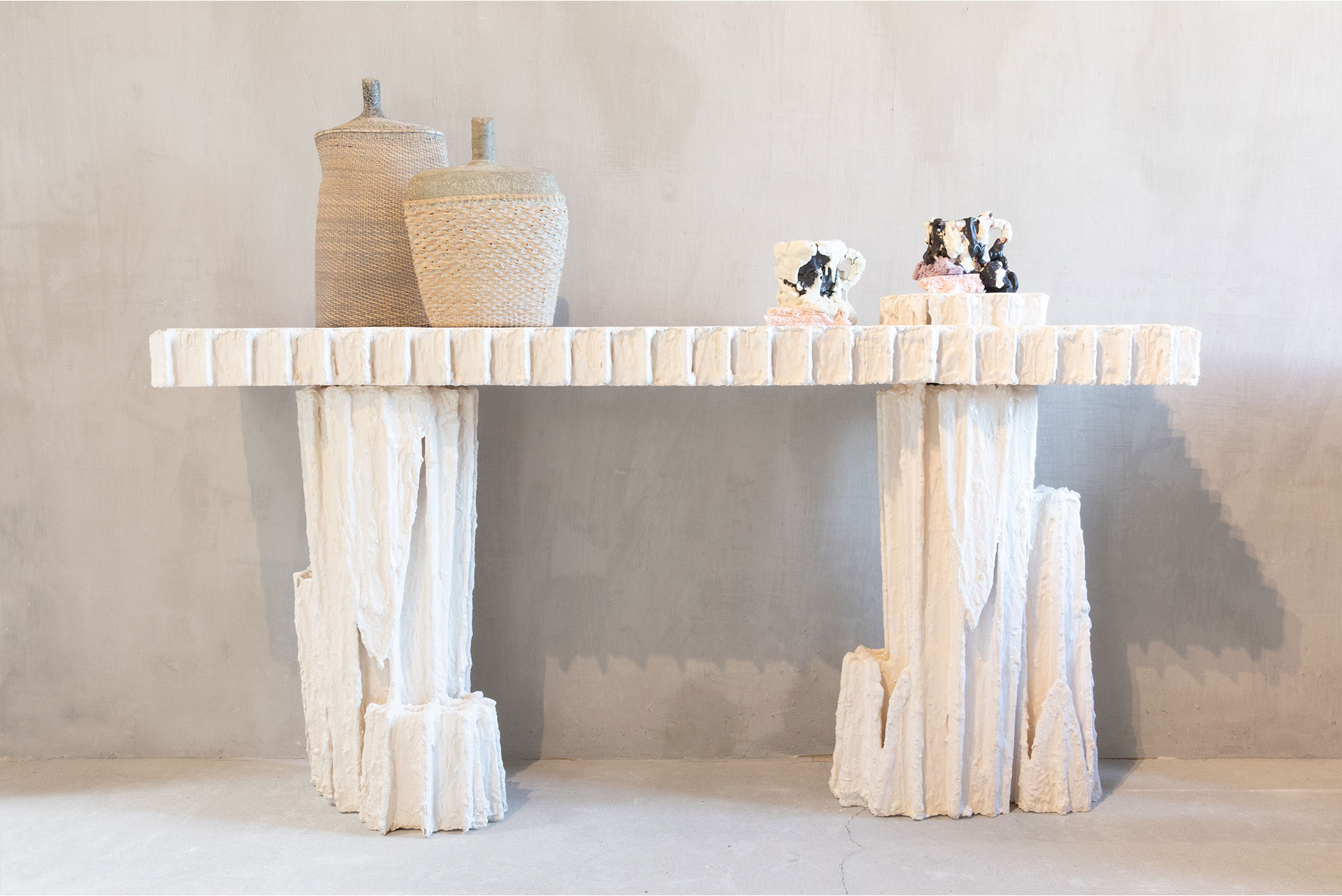
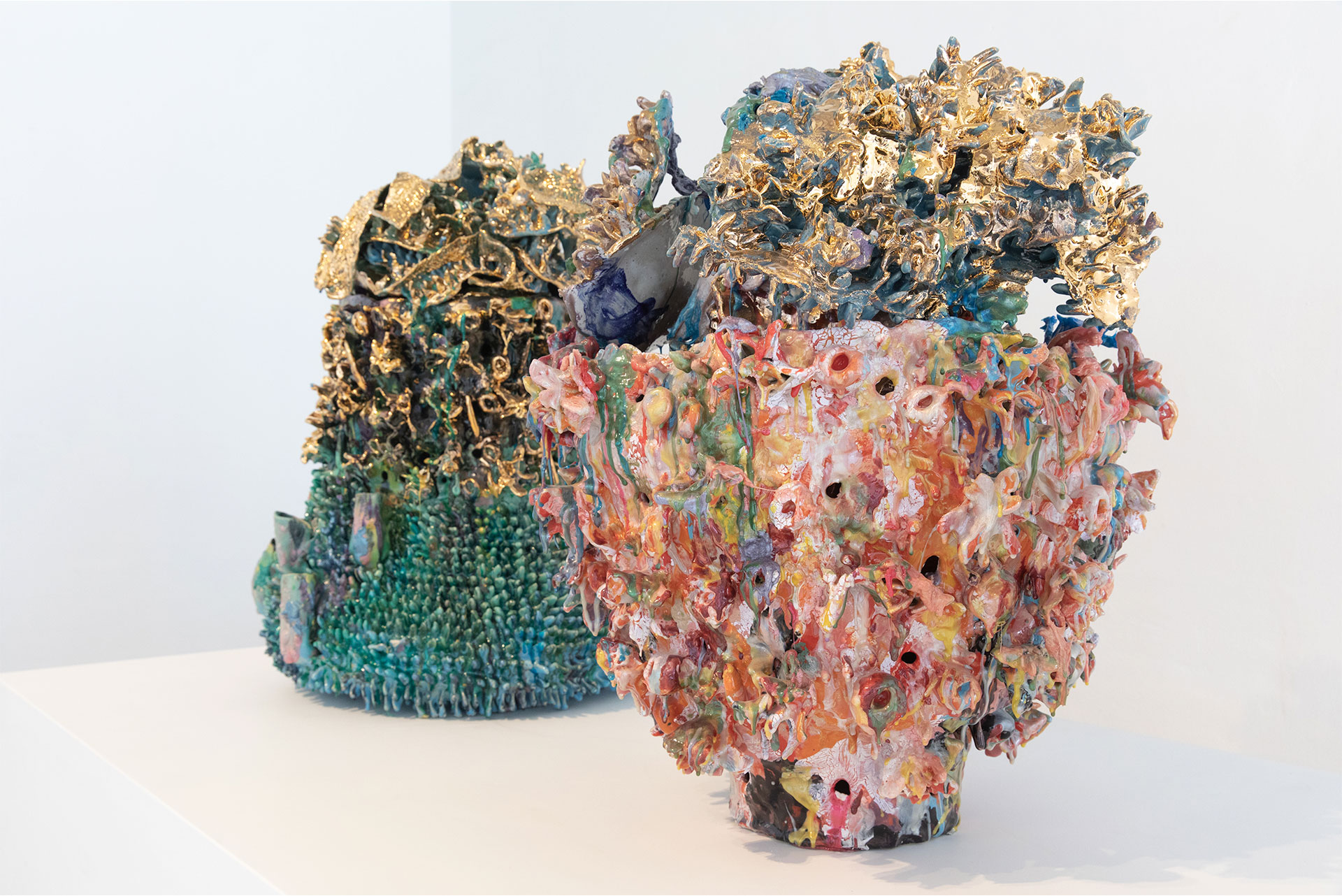
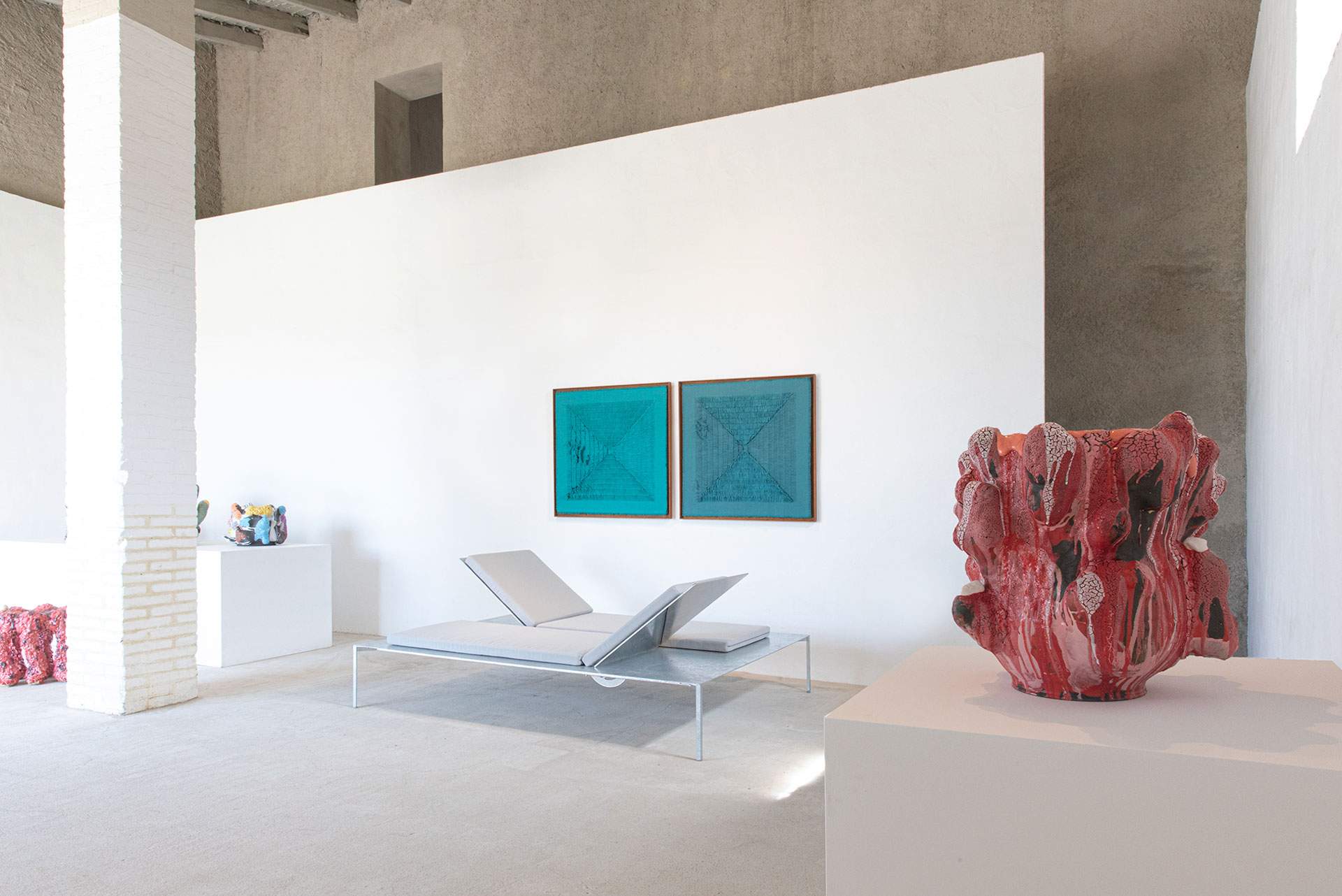
Side Gallery is delighted to announce the opening it’s annual exhibition at Casavells. Situated in the Idyllic countryside of Empordà – Costa Brava, the magnificent Spanish masia will host the presentation of a curated selection of design and contemporary ceramics.
The 2022 seasonal edition will act as a continuation of Side Gallery’s recent ceramic exhibition, “Exposed Materials”, whereby a new group of artists, such as Liu Xi with her gilded ceramic sculptures that show the stunning diversity and beauty of the female anatomy, and Roger Herman’s surrealist vases decorated with Paleolithic cave drawings, recommence the gallery’s desire to explore the world of clay. Amongst others, Nick Weddell’s googly eyed stool, and amorphous tableware, Adam Shiverdecker’s absurd mugs, Harvey Bouterse’s chic ceramic lamps, and Willem Van Hoof’s African vessels explore the diverse nature of contemporary vernacular ceramics.



Alongside a comprehensive combination of ceramic artists, Side Gallery delves deep into realms of contemporary design, exhibiting works ranging from the sharp lines and raw surfaces of the multifunctional furniture “Beasts” of Sam Chermayeff, to the abstract memory foam meteorites of Sanghoon Kim. Seeking to bring together an animated assortment of designers such as Nebil Zeman, Charlotte Kingsnorth, Elissa Lacoste, Taher Asad-Bakahtiari, Sophie Rowley, Jennifer Zurick and Lukas Saint-Joigny, Side Gallery endeavors to expose the diversity of contemporary design. Albeit chemical reactions, digital drawing or handicraft techniques this collection of creators differ in processes, but through material and colour amalgamations can be merged and melted together to create surprising combinations.
In most cases, the designer's forms are derived from typologies that we understand intuitively , but are altered, and the identification of an object can even be lost, through the reduction of form, or added applications, often allowing the objects to acquire a new meaning. In the case of Zeman, the intense layering of dripping plaster gives his objects a sense of otherworldliness, stemming from a fascination with ancient civilisations, archaeological encounters, science fiction and futuristic visions. Charlotte Kingsnorth intuitive lead process of addition and subtraction, physically sculpting out a character and rearranging new body parts in what appears to be an anthropomorphic happening, similarly allows her objects to live a second life.
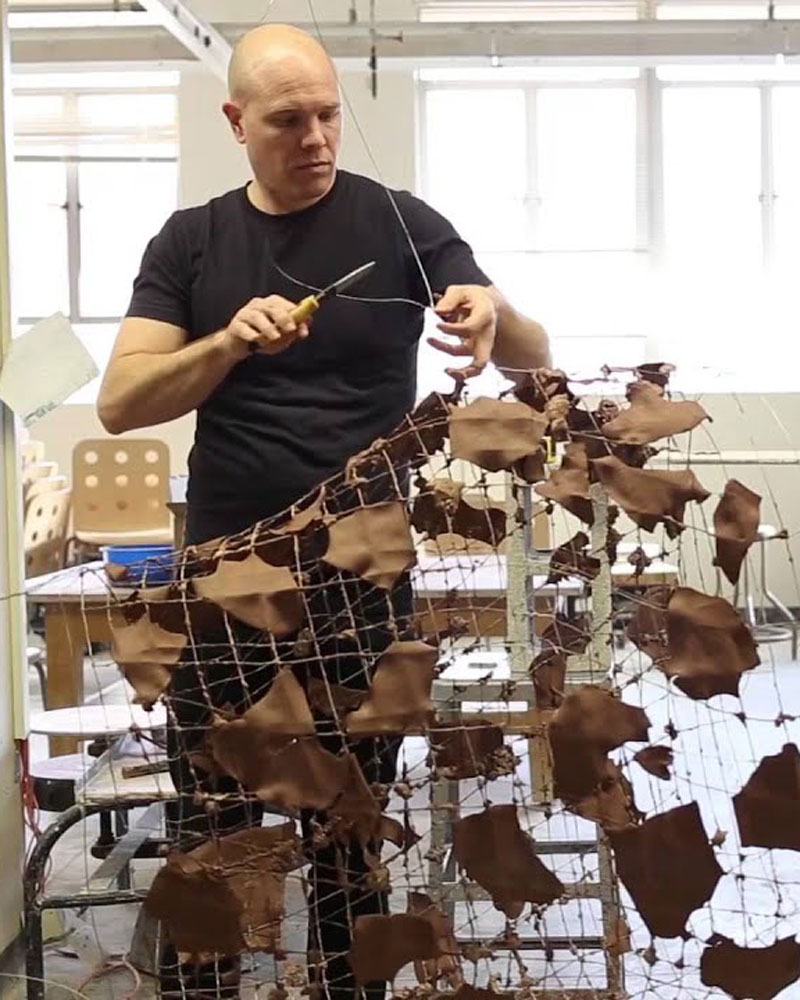
Adam Shiverdecker (b. 1980, Arcanum, Ohio) is an artist and educator living in Berkeley, California. He has held multiple artist residencies, including The Archie Bray Foundation, Greenwich House Pottery, and the Tyler School of Art. His work has been shown widely, including recent exhibitions at Museum of Craft and Design, Everson Museum of Art, The Nelson-Atkins Museum of Art, and San Jose Institute of Contemporary Art. Adam is currently Associate Professor of Spatial Art at San José State University.
For his third series of works, aptly titled "Absurd Mugs", Shiverdecker seeks to illustrate the loss of identification of an object, through the reduction of form, until there is little to nothing left to reference the object's original functionality. The shape of the cup acquires a new meaning by taking on the form of a landscape. These pieces have been created using different processes and ceramic materials that are fused together. This process invites reflection: Can conventional forms be rethought through new methods, or should they simply disappear?

Charlotte Kingsnorth makes work that welds functionality with sculpture. There are no limitations in terms of scale, material or process, instead her work embraces a marriage of industrial and artisan techniques, often weaving in pre-existing objects. She is interested in anthropomorphic forms and carves personality into the materials she uses.
Kingsnorth is a graduate of the Royal College of Art's design products programme and runs a London-based practice, working with private clients, galleries, brands and global institutions, including The Bill Gates Foundation, Fendi, ByFar, SHOWstudio, Saatchi, Christies, The Crafts Council, The V&A, Holon Design Museum in Israel, the Triennale Design Museum in Milan. She has shown in design fairs at Nomad in Monaco, St. Moritz and Capri, Design Miami, New York, London, Paris and Milan, and has works in the permanent collection at Turkey's Odunpazari Modern Museum.

Deloss Webber (born 1951, USA) is a contemporary artist who grew up living in North Africa, Spain and the United States. As well as making a living in the fiber arts, Webber has been greatly influenced by nume- rous ethnic forms of weaving. The artist finds constant nourishment in cultures and places beyond his own borders, and has an abiding interest in Japanese basketry, having been taught rattan weaving by his mother during his youth in North Africa and Spain. For over 30 years, he has evolved as an artist, continually developing his fiber sculptures and also challenging his own artistic parameters by exploring and experimenting with other visual medias. Webber has exhibited his work in several major galleries and museums, including the Bellevue Art Museum.
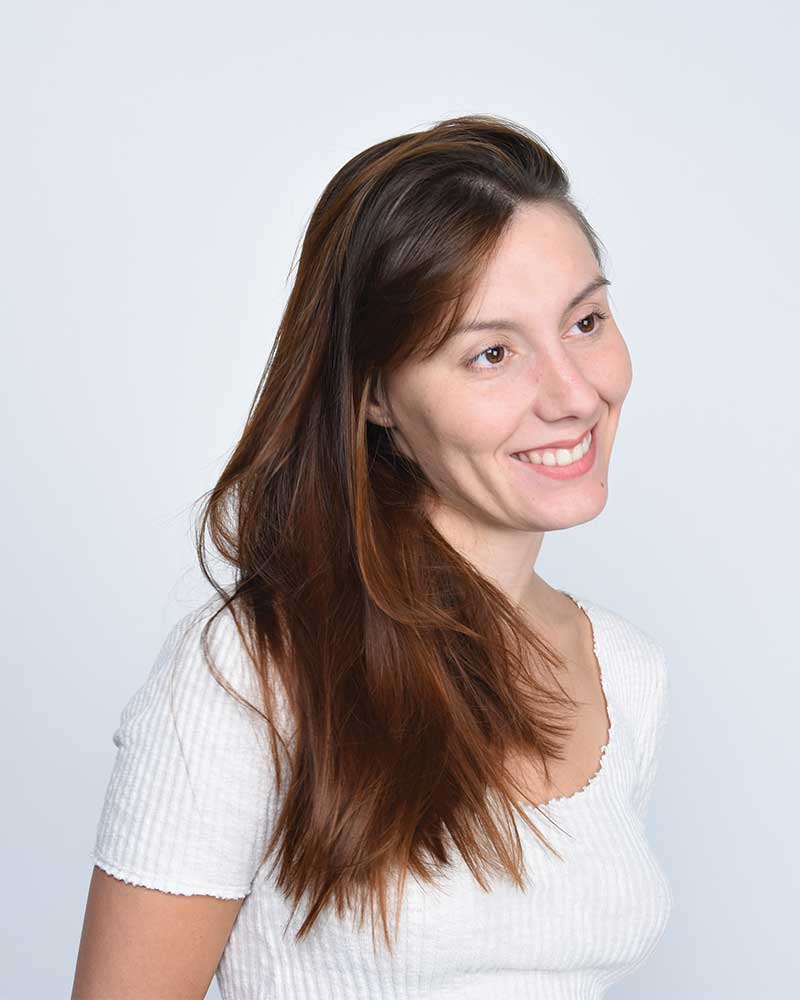
Elissa Lacoste (b. 1994, France) is an experimental designer who lives and works in Burgundy, France. She studied at Ecole Supérieure d’Art et Design Saint-Etienne and Latvian Art Academy in Riga. She obtained her MA at Design Academy Eindhoven in 2018 in the Netherlands.
Hands-on and instinctive, her work stems from her quest for the wild, the inexplicable and the sensorial within contemporary boundaries. Unconventionally textured and vibrant, her sculptural pieces linger between the real and the surreal while maintaining a hint of functionality. In her work, she evokes an otherness to reflect upon our relationship to our physical environment, be it anthropogenic or natural.
Her organic forms often provoke a cognitive dissonance like her monolithic stone-like silicone pieces.
Fascinated by material abilities and not bounded to a specific material, she looks into various techniques but prefers to experiment intuitively, without resorting to traditional craft knowledge as a first step.
In this way she favors serendipity and encounters surprising results that she develops into her own techniques and methods of shaping matter and creating objects.
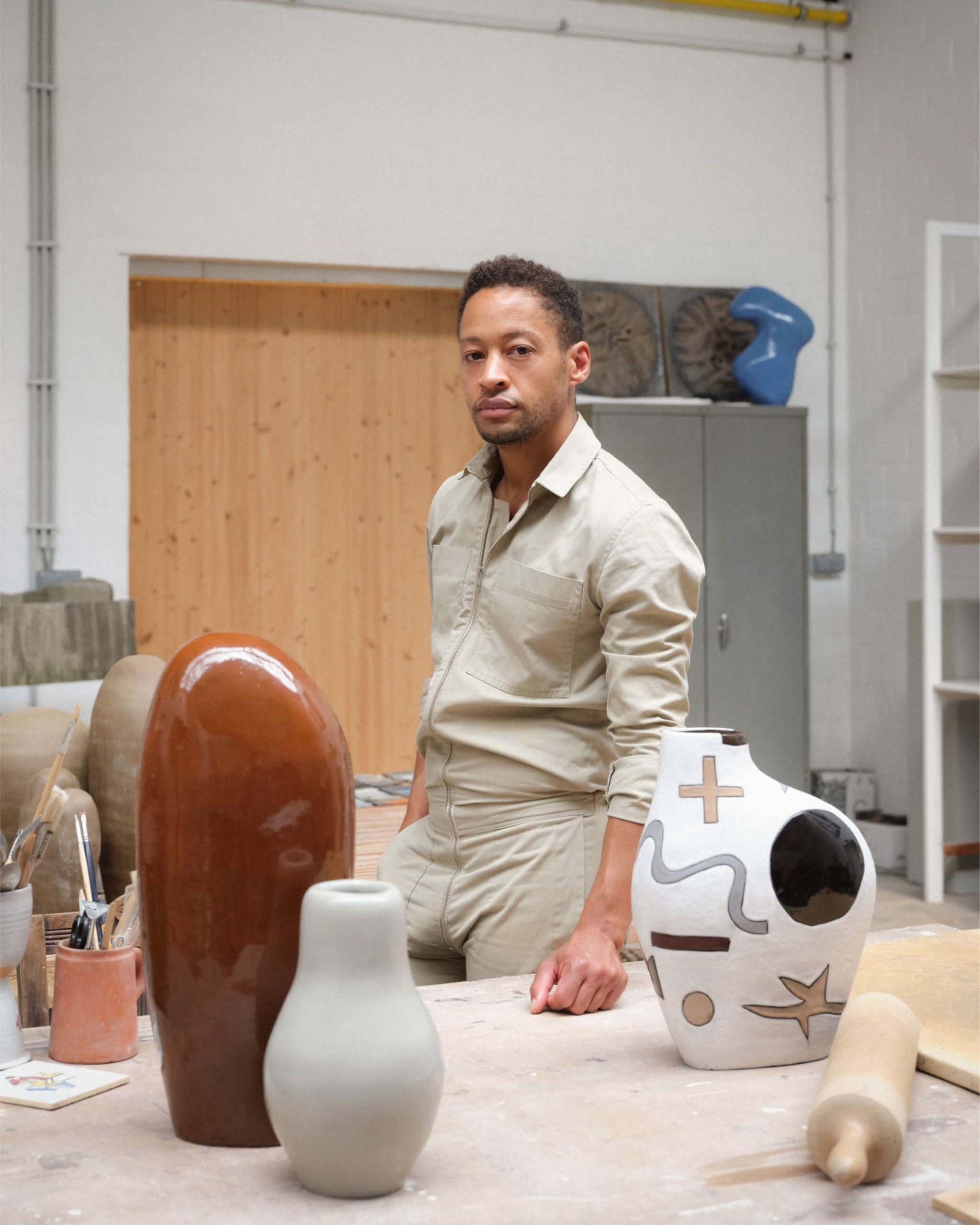
Harvey Bouterse is a Fashion designer turned ceramic artist who moved from Rotterdam to Antwerp at the age of 18 to work with Wim Neels and Veronique Branquinho. As well as boasting his own label HrVi, he made a name as Senior Designer Womenswear Pre-collection at Jean Paul Gaultier in Paris. From the very beginning, Bouterse sought the thin lines between fashion, design and art and regularly collaborated with artists and designers from different disciplines. By collecting art, he quickly became obsessed with ceramics and not much longer Bouterse began adding sculptures and jewelry of ceramics to his own fashion collection. In 2015 the Antwerp based designer officially moved to ceramics, and has since moved through the field creating several series’ of objects and sculptures. Bouterse never creates sketches or designs, his process is intuitive and organic allowing the objects to take their own shape. The artist combines glazes more commonly used in the 60s and 70s, with new contemporary glazes to create original and surprising effects. Bouterse finds inspiration in innocent and primitive forms, Brutalist architecture and his very own South-American roots.

I G G is a Berlin-based atelier founded by Illya Goldman Gubin. Breaking the binary continuum of thinking and feeling, science and mysticism, and blurring the line between tradition and innovation, handmade and luxury goods, perfection and imperfection, Illya Goldman Gubin‘s installations are emphasizing the complexity of human consciousness in order to unravel a better understanding of the self. Terminologies borrowed from the judaism are pervading the art works, serving a reminiscences to the cultural imprint. Integrating the ethnical designation into the work in new and unexpected ways is the product of a permanently sincere dialog between the past, present and the future. The interference of multi perspectivity combined with self-reflection is thus creating a patchwork of sanity and new realms, merging believes and codes of the past with newly acquired knowledge. Searching for the universal key, each work is timeless - it is a bridge to more knowledge that represents the presence and paradigms. Exploring the ambiguities of modern life, challenged by the rapidly shifting conditions of our period, Illya Goldman Gubin creates multi-layered reflections of everyday perception. The artist transforms paradigms, materials, space, and time into works that invite beholders to reflect and feel. Illya Goldman Gubin captures the moment, which in turn perpetually creates other moments yet to come. The result is a body of works in a constant state of flux, encompassing art and a deeper meaning of existence to gain a complex and fuller understanding of the self, to open minds and hearts and liberate their spirit.
Jennifer Zurick is a self-taught artist specializing in black willow bark which she has been harvesting and weaving into baskets since 1980. She is the recipient of a 2010 United States Artists Fellowship and was selected for the 1999 Kentucky Arts Council Cultural Exchange Residency in Ecuador. Her work is inspired by basketry and textiles from many cultures with a special appreciation for Native American basketry.
Inspired by the land around her willow bark became her fiber of choice and woven vessels have evolved into her prominent model of creative expression. Jennifer aspires to create simple, elegant woven pieces that possess a richness of spirit and presence embodying the soul of the tree from which they came from. A fascination with old tribal textiles, finally woven functional containers and ancient processes fuels her inclination to manipulate fiber. Enjoying various weaving techniques to inject texture and rhythmic design elements, she draws significantly upon the basketry. As her work evolves, she is compelled to create more intricate textile-like woven forms, finding great satisfaction in emulating the art and integrity of fine basketry.

Liu Xi (b. Shandong, China, 1986) graduated from the Sculpture Department of the Central Academy of Fine Arts (CAFA) in Beijing, after which she started her artistic career working from Shanghai and Jingdezhen. Her sculptural compositions are immaculate and innately sensual, capturing the themes of sexuality and love, freedom and limitations, identity and self-discovery, femininity and masculinity, and many more. Her creations have received top awards and honorable mentions, such as the first prize at the VIII Biennale International de Ceramica, El Vendrell, in 2015 and an honorable mention award at the 13th International Biennial of Artist Ceramics of Aveiro in 2017. Besides this, her works have been acquired by the public collections of the Los Angeles County Museum of Art (LACMA) in the USA; White Rabbit Collections, in Sydney, Australia; New Taipei City Yingge Ceramics Museum in Taiwan; Ajuntament del Vendrell in Spain; the Museu de Ceramica de L'alcora in Valencia, Spain; and the Municipality of Averio in Portugal, etc.
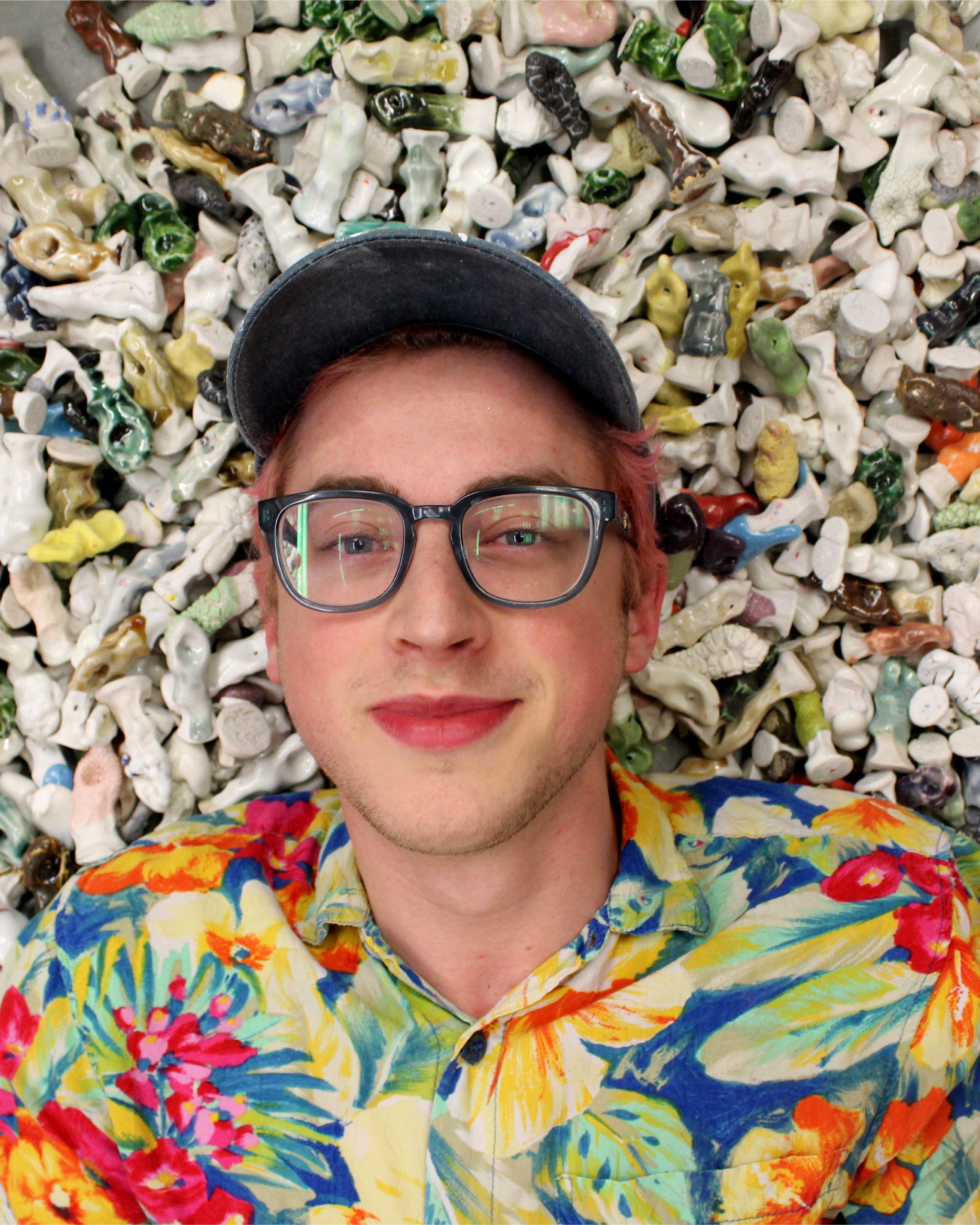
Nick Weddell is an artist who lives and works in Chicago, Illinois. He received a Bachelor of Fine Arts in ceramics from Texas State Universi- ty (2016) and a Master of Fine Arts from the New York State College of Ceramics at Alfred University (2019). Weddell plays with the archetypes of an expanding range of everyday objects: tweaking cups, rugs, and armchairs with a mirthfulness that splashes into our everyday routines and domestic spaces. Weddell’s work is catalyst for curiosity, a challen- ger of convention, and above all a harbinger of joy. Nick Weddell has been a resident artist at the Center for Contemporary Ceramics at CaliforniaState University Long Beach (2019), Lefebvre et Fils in Versai- lles, France (2019), and is currently a long-term resident at the Archie Bray Foundation in Helena, Montana (2019-2021). Weddell’s work has been collected by the Everson Museum of Art in Syracuse, New York, the Dallas Museum of Art in Dallas, Texas, and the San Antonio Museum of Art in San Antonio, Texas, as well as in several private collections in the United States as well as in Australia, China, Japan, Europe, and Canada.

Roger Herman is a painter and ceramic artist (b Saarbruecken, Germany, 1947). Roger combines his work as a professor of Fine Arts at University of California in Los Angeles with his career as an artist. Influenced by expressionism, his style is characterised by wild mixtures of lines, shapes, opacities and ad hoc, fast-stroked stains and smudges that overlap in awkward but satisfying compositions. He works intuitively with the clay, making shapes on the wheel, from which he modifies and decorates them until the final result. The vessels usually have bright underglaze colours contrasting with dark, glossy glazes and vary in size and shape. They range from small cups or bowls to huge vases, pots and platters. Herman also applies many drawing and painting techniques, such as inlay, scraping, wax resist, oxide wash, and underglaze and glaze combinations. In addition, his pieces vary in style from both abstract and figurative to convey an informal, open, honest and exuberant look.
Shortly after graduating, he received a postgraduate scholarship from the Academic Exchange Service (DAAD). Later, in 1981, Herman moved to Los Angeles because of his interest in the city as an artistic centre and it was at this time that he received the National Endowment for the Arts Painting Fellowship. Roger Herman has exhibited broadly in the United States and Europe. His solo exhibitions include the Santa Monica Museum of Art, Ace Contemporary Exhibitions, Los Angeles and New York and the Los Angeles County Museum of Art, among others. In addition, some of his finest collections are housed at the Museum of Contemporary Art in Los Angeles and the MOMA in New York.
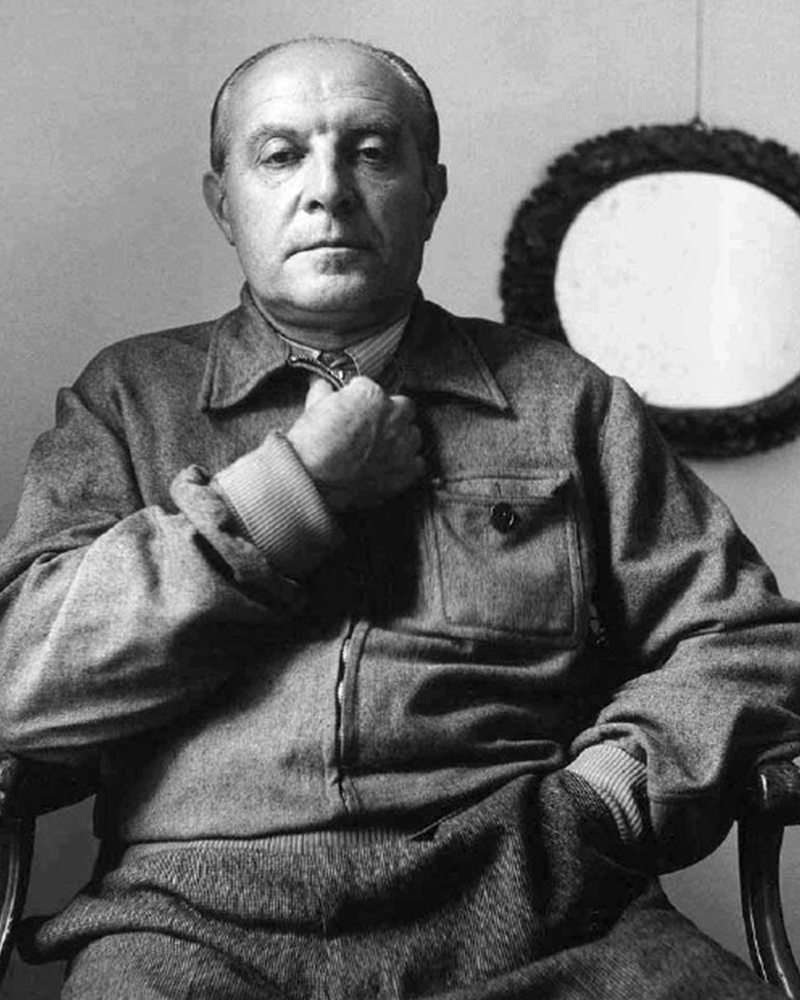
Giovanni "Gio" Ponti (born November 18, 1891, Milan, Italy–died September 16, 1979, Milan, Italy) is considered one of the most important and influential Italian architects. He was successful as an architect, industrial designer, furniture designer, artist, and publisher. His influence on modern Italian architecture is incontestable, and he is often referred to as the father of modern Italian design.
He worked in the design profession for over sixty years. During his prolific career, Gio Ponti produced several furniture pieces, decorative artworks, and industrial product designs, extracting old artisan skills while exploring modern production techniques. Additionally, creating critical architectural works in Italy and internationally.
The great designer graduated from Politecnico di Milano in 1921. In 1923, he began working in industrial design, designing ceramics for the Richard Ginori pottery factory near Florence. After two years, he convinced Richard Ginori to participate in the Internationale des Arts Décoratifs et Industriels Modernes (a 1925 Paris exposition), where Ponti's ceramic designs were very successful. During this time, Ponti forged a lasting relationship with the executive and shareholder of Christofle, Tony Bouilhet, who later in life would marry Ponti's niece, and for whom he designed Villa Bouilhet at the Saint-Cloud golf club near Paris, one of Ponti's first housing design projects. During his 15-year association with the Richard Ginori pottery factory, but especially during the early years, Gio Ponti collaborated with craftsmen and artisans to create rich designs with abundant colours, elegant shapes, and skilled craftsmanship, mainly in the neoclassical style. This style was out of favor with the functional and minimal approach of the then-prevalent Italian Rationalism, and it was distinctly present in Ponti's work in the 1930s and 1940s and less and less so in the later years.
In 1928, Ponti delved deep into publishing and began Domus, architecture and design magazine, to energize and assimilate Italian architecture, interior design, and decorative arts. His leadership at Domus would allow him to express his ideas regarding the Novecento artistic movement, a counter-movement to Rationalism, and ensure recognition of top Italian design. He worked at Domus until 1941, when he moved on and founded Stile magazine (Lo Stile–Nella casa e nell'arrendamento), and asked several young architects and critics–among them Lina Bo Bardi, to collaborate with him. However, Ponti closed Lo Stile and returned to Domus in 1947, where he remained involved for the rest of his life.
Many books, magazine articles, and exhibitions have been attributed to exploring the influence and exceptionality of Gio Ponti's work. Throughout his working life, he designed a considerable amount of ceramics, furnishings, and objects. He embarked on many of his designs alone, and some were created in collaboration with other artists and designers of the time. He produced some of the objects himself, while others were made in workshops by expert craftsmen, and some pieces were manufactured by some of the significant furniture manufacturing companies of the time. The diversified production of his work is a clear indicator of his interest in both industrial productions and artisanal production.
In 1923, Ponti made his public debut as a product designer in Italy at the first Biennial Exhibition of the Decorative Arts in Monza, followed by his involvement in organizing the subsequent Triennale exhibitions of Monza and Milan. In 1933, Ponti exposed entrepreneurial spirit and invited Pietro Chiesa to join him and Luigi Fontana to embark on the venture of Fontana Arte, a company that would become a force in Italian furniture design that specialized in manufacturing furniture, lighting, and furnishing accessories.
In the 1940s, Ponti collaborated with Paolo de Poli to produce furniture, decorative panels, and new objects of design and animal motifs in sculptural forms, and in 1946, he started three years of involvement designing Murano glassware for Venini.
During the early 1930s, Gio Ponti and Piero Fornasetti started a long, productive, and somewhat methodic collaboration, as it mainly consisted of Ponti-designed furniture decorated with Fornasetti paintings and engravings. During the 1950s, in line with the other influential Italian designers, such as Nino Zoncada, Gustavo Pulitzer, Paolo de Poli, Pietro Chiesa, and Gino Sarfatti, Ponti designed the interiors, including the furniture for ocean liners. In 1947, Gio Ponti established a long and strong friendship with the Italian architect and designer Ico Parisi and his wife, Luisa Aiani, collaborating in the design studio La Ruota.
In the late 1940s and 1950s, Ponti became a bountiful furniture designer, his chairs and sofas of significant popularity. His work was portrayed with a joyful spirit and a sensitivity to modernism that are persistent. Among his important chair designs are the armchair model no. 811 for Figli di Amedeo Cassina (1950), with an inclined and angular wooden frame and a suspension system for the seat and backrest made out of elastic belts made by Pirelli; the Model 111, also for Figli di Amedeo Cassina (1950); the Diamond sofa, originally made for his house (Cassina,1953); the Mariposa, or butterfly, chair, which was originally designed for the Villa Planchart in Caracas (1955); the successfully omnipresent Superleggera chair, also for Cassina (1957), the crowning achievement of a long and fruitful work relationship designing furniture and objects for Cassina; the Continuum rattan chair for Pierantonio Bonacina (1963); the Dezza armchair for Poltrona Frau in 1966; and the Gabriela chair, or the Sedia di poco sedile, for Pallucco (1971).
Other important Ponti designs for Italian furniture manufacturers include
the series of chairs, lounges, desk chairs, and desks designed in 1950 for the Vembi-Burroughs office in Genoa;
the designs of cabinets and sideboards for Singer & Sons (1951);
the vanity desk or vanity dressing table for Giordano Chiesa (1951);
the side table D 5551 designed initially for his house in Via Dezza in Milan (1954);
the 1960 and 1964 furnishings for the hotels Parco del Principe in Rome and Parco del Principe in Sorrento; and
many furniture pieces he designed in the late 1960s for Tecno, Osvaldo Borsani's furniture manufacturing company.
Gio Ponti participated in the architectural and interior design of two important hotels in Italy: the Hotel Parco Dei Principe in Sorrento (1960) and the Hotel Parco Dei Principe in Roma (1964). The interiors for these two hotels were designed with a unique modern sensuality that evoked sophistication and style. The projects were created in collaboration with Fausto Melotti and Ico Parisi.
In 1966, he invited lighting designer Elio Martinelli to showcase his lamps at the opening of the Eurodomus exhibition, which drove forward Martinelli's career as an innovative light designer.
Among Ponti's architectural masterpieces of the 1930s are the Institute of Mathematics at the University of Rome (1934), the Catholic Press Exhibition in Vatican City (1936), and the first office block of the Montecatini company in Milan (1936). In 1950, Alberto Pirelli, the owner of the Pirelli tire company, selected Gio Ponti to design and develop a building to house his company's offices. Gio Ponti hired architects Pier Luigi Nervi and Arturo Danusso to collaborate with him, and the team began the construction of the Pirelli Tower in 1956. When completed in 1958, the 32-story, 127-meter-high Pirelli Tower, with its unique hexagonal plan, became Italy's first skyscraper and a symbol of the postwar economic recovery of Italy.
Two of his most renowned architectural works, though, were built outside of Italy. One of these works is Villa Planchart, or “El Cerrito” (1955), in Caracas, built for Anala and Armando Planchart at the top of a hill, or cerro, overlooking Caracas. For the Villa Planchart project, Ponti designed the 10,000-square-foot, six-bedroom house, and the furniture and decorative objects. Another of Ponti's most famous works is Villa Nemazee (1957–1964) in Tehran. The Namazee family commissioned this home at the recommendation of Mohsen Foroughi, architect and dean of the Faculty of Fine Arts at Tehran University. For Villa Namezee, Ponti developed a design based on the traditional Iranian courtyard house. The Iranian regime has since revoked the villa's heritage status, making its future uncertain. Italian artist and ceramicist Fausto Melotti collaborated on the interior design and furnishings of both villas.
In the 1970s towards the end of his career, Ponti was on an intense mission to explore transparency and lightness in his work. During this time, he designed and built facades resembling undulated and perforated sheets of paper with geometric shapes and unique patterns. In 1970, he finished the Taranto Cathedral, a white rectangular building with a huge concrete façade punctured with openings. In 1971, he contributed to the exterior envelope design of the Denver Art Museum in Colorado—the only Gio Ponti building in North America. He also submitted the project design for the future Centre Pompidou in Paris.
In 1934, he was given the title of Commander of the Royal Order of Vasa in Stockholm. He also obtained the Accademia d'Italia Art Prize for his artistic merits, the gold medal from the Académie d'Architecture in Paris, and an honorary doctorate from the London Royal College of Art.
Gio Ponti died in 1979 on Via Nezza in Milan. His many prizes and titles throughout his life signify his importance as a designer. His furniture and design objects continue to be sought after by collectors today, indicating the revolutionary status of his mid-century designs.
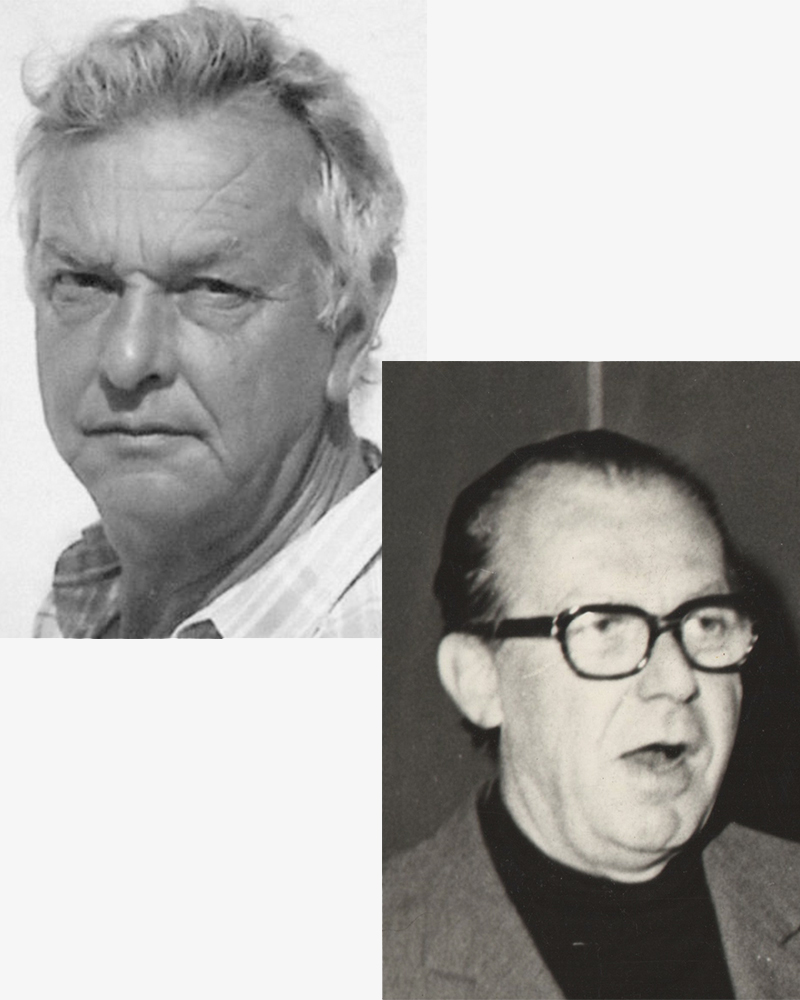
Martin Eisler (Vienna, Austria, 1913 - São Paulo, Brazil, 1977) was an architect and furniture designer. He was part of a group of European architects and designers who left Europe during the chaos of the Second World War and went to live and work in Brazil. Eisler stood out amongst this group of creatives. His work was at the forefront of modern furniture design in Brazil, which flourished through the 50s and 60s. Eisler's work in partnership with Carlo Hauner (1927-1996) was of particular significance.
Eisler left Europe in 1938 due to the rise of fascist regimes. He first lived in Argentina, where he was settled and worked as an architect, set designer, and interior designer. Eisler opened up an interior design firm Interieur Forma. In 1940, he married Rosl Wolf, the daughter of German immigrants.
Born in Brescia in 1927, Carlo Hauner studied technical drawing and drawing at the Brera Academy in Milan, Italy. In 1948 he successfully participated in the Venice Biennale, after which he moved to Brazil, where he dedicated himself to the design of textile, ceramics, furniture, and architecture. After purchasing a factory from Lina Bo Bardi and her husband Pietro Bardi, he quickly founded a furniture production company, renaming it Móveis Artesanal.
In 1953 Hauner met Martin Eisler, who was looking for help to produce furniture for the home of his brother-in-law, Ernesto Wolf. Eisler reached out to Hauner, marking the beginning of a flourishing partnership. The two men connected, and with Wolf's financial backing, they opened Galeria Artesanal (a store for their company Móveis Artesanal) on a busy street in São Paulo.
Being highly ambitious and with an eye on the international market and the upcoming office market, Móvies Artesanal later changed into Forma. Along with Oca, Forma became one of the biggest names in Brazilian furniture production. Eisler attracted exclusive license to sell Knoll furniture, bringing big names in international design such as Mies Van Der Rohe, Charles Eames, and Harry Bertoia to the Brazilian furniture market. Hauner and Eisler's designs are characterized by Brazilian woods, thin tubular frames, and range from furniture to ceramics and textiles. Some of their most famous designs are the "rib" lounge chair, the "concha/haia" chair or "reversible" lounge chair, both shown in this exhibition. In 1958 Hauner decided to return to Italy to open Forma di Brescia, which catered to, e.g., the embassy of Brazil in Rome and Vatican City. Eventually, Hauner sold his part of the company, leaving Eisler solely at the helm to paint and make wine on Salina, a little isle just above Sicily. After a fulfilled life, the artist, designer, and serial entrepreneur died in 1997. Forma prospered during the 60's and 70's, until Martin Eisler died in 1977. His original company in Argentina still exists and, at the moment, is the sole heir to Hauner and Eisler's Heritage. Although Hauner and Eisler designed and produced many pieces, the depth and quality of their work outlined is only the beginning of their lasting impact on the design world.
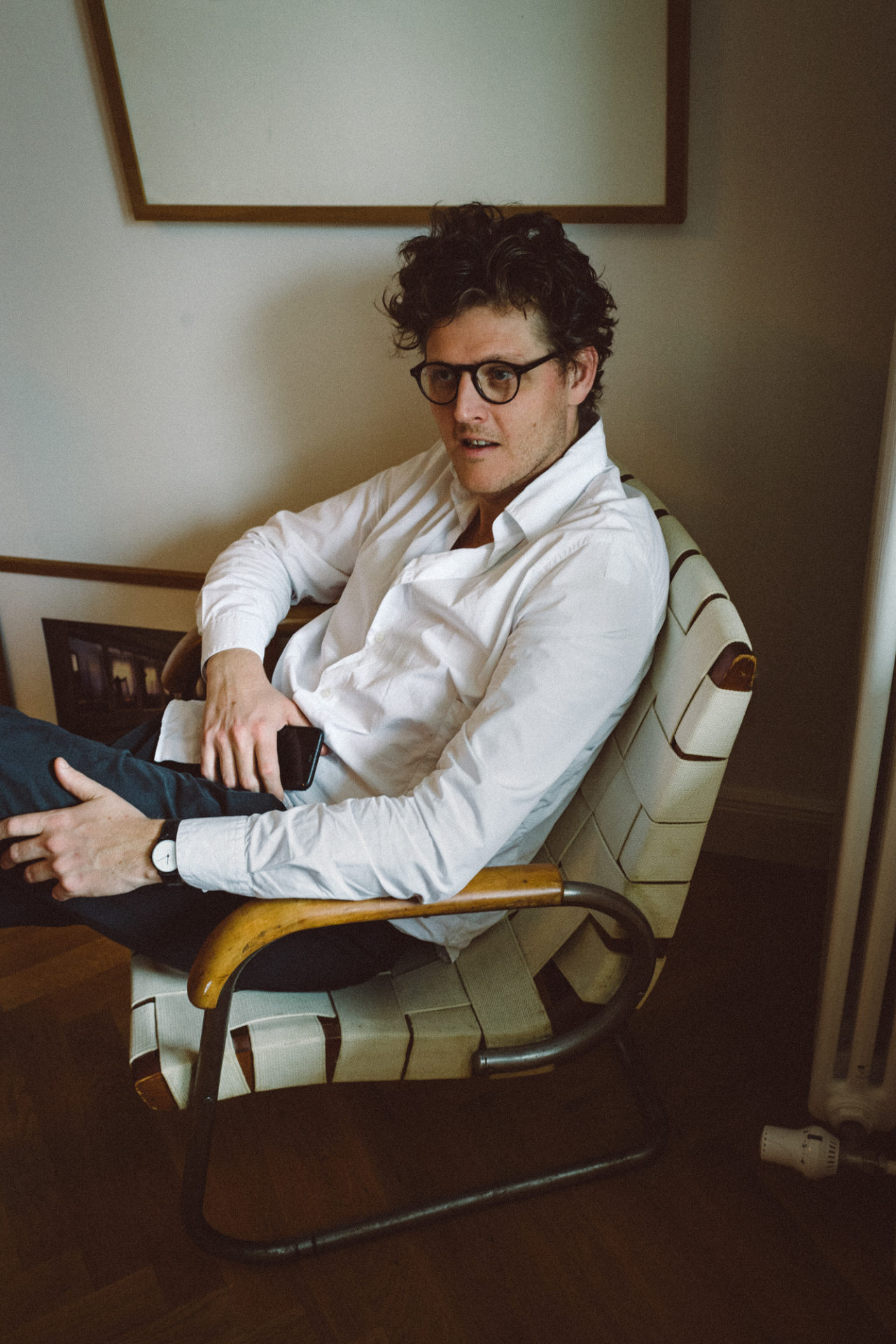
Sam Chermayeff (New York City, 1981) is an architect, and furniture designer based in Berlin and New York City. As well as running his personal practice, Sam Chermayeff Office, he also cofounded the office June 14 Meyer-Grohbrügge & Chermayeff. As a young architect, Chermayeff worked for SANAA in Tokyo for more than five years, leading projects such as the Serpentine Pavilion and the curation of the Venice Biennale.
Both June 14 and his private office are engaging in a wide range of projects including furniture. Sam’s very first furniture design, Star Bench, created in collaboration with Johanna Meyer-Grohbrügge, was developed on the occasion of an exhibition, the group show “F-Utility?”, curated by porter Clark at the Land of Tomorrow Gallery in Lexington, Kentucky, in 2010. Built in two parts and assembled onsite around an existing steel column, that could potentially be a tree trunk in a park – the bench is simple and effective. The Star-shaped seat, made of six irregular sized tips welded on a dozen thin poles, marked a meeting point. Rather than an average orthogonal bench, it allowed and increased the number of people to talk, facing one another from multiple positions, resulting in an optimized way of communicating and, above all, forming a community.
Another early furniture design, was the so called Ad Reinhardt SANAA chair. It was assembled by Chermayeff in 2013 as a unique piece, blending gets another, yet transcultural meaning. Here, he has used the iconic and nameless chair of his former employers, the Toykyo architecture firm Kazuyo Sejima + Ryue Nishizawa / SANAA – a sparse chrome steel chair designed for the Japanese Pavilion at the 8th Venice Architectural Biennale in 2002, at the time curated by Arata Isozaki – and mounted on a backrest an original work by the artist Ad Reinhart, the multiple – titled 9 Square made in 1961, a canvas with resin cast in an aluminum frame that Sam found in the attic of his grandfather Serge’s house. This very object, not only interconnects two continents, and generations, it also amplifies, condenses, the ‘infinite’ of the polished, mirrored seating with the ‘black hole’ of the back rest.
From 2015 onwards, Sam Chermayeff developed two new furniture typologies, a bed and a kitchen, both which literally represent the idea of a community – or, if you like , ‘a joint venture’. His Triangular Bed, by surface 40% larger than an average double bed and occupying more than 4.5m2, can easily be considered a room of one’s own, a hermaphrodite, existing between a service area and a playground that is obviously destined for more than one purpose, be it to rest, relax, have sex or to sleep. The design is taken to such a height that even the bed lien is bespoke, including triangular couture pillows. If the Triangular Bed stresses a common use, the individual elements for the Free Kitchen seem to form a community in itself. Developed first as a prototype ensemble for the architect’s own use, basically designing unique single plinth and stands with specific heights and proportions for some of his own kitchen gear, (toaster, sink, bin, fish tank, etc), and combining them with kitchen furniture, such as the dishwasher, fridge, stove, shelf, and table, the kitchen-concept itself became somehow freestanding, if not liberated. The Free Kitchen, offers a true innovation, actively interacting with other areas of our habitat.
Having so far realised some 50 furniture prototypes, small series and custom-made equipment, from a bathtub stand that includes a massive granite stone to a bespoke steel stool for a concert piano player, from a tiny stove to a monumental street light table, Chermayeff continues to reimagine the use of furniture pieces. Opening on the 15th of October 2021, Chermayeff will present a new body of works, Beasts, in his first solo exhibition at Side Gallery in Barcelona. The body of work is both a continuation and departure of his previous works. Each of the twenty plus works is a body that invites our bodies to inhabit specific settings. A chair is a desk, a hutch is place to put on shoes and make-up, a sofa is a place to face ones interlocutor and so on. Each piece endeavors to engender a new relationship between our diverse physicalities and our everyday lives. In some cases we use these pieces alone and in others they bring us together. We understand ourselves through our interactions with the pieces and we commune with others. Made entirely of galvanized steel, this series is taking a further step by quite literally sharpening our connection to the work. It is reflective and as such we see ourselves. Its forms come from typologies that we understand intuitively. A table is still a table, even if it is also a light that supports its reflecting surface. This reflection might make the object disappear while its function, eating, working and so on come to the fore. It also makes us, doing those things, appear.
Alongside his architecture and furniture design, Chermayeff has taught at the Dessau Institute of Architecture, Columbia University and currently teaches at Cornell University among other institutions. In 2020 he published Creatures [ et al.] with apartamento, a book that looks back through nearly two decades of experimental projects undertaken by the Berlin based architect.
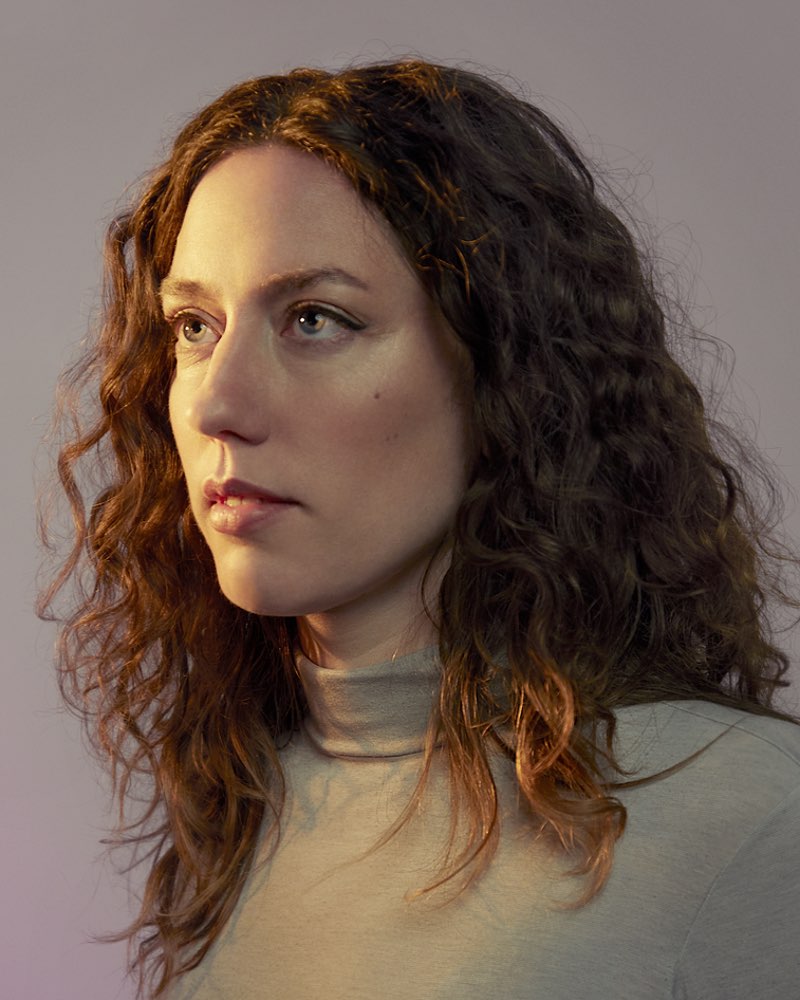
Marjan van Aubel is an award-winning solar designer whose innovative practice spans the fields of sustainability, design and technology.
In collaboration with scientists, engineers and institutions such as Swarovski and ECN.TNO, the Dutch Energy Centre, van Aubel works to promote extreme energy efficiency through intelligent design. From working with expandable materials, to domestically integrating solar cells that mimic the process of photosynthesis in plants, she adds a double function to objects and puts them to work: A table is not just a table, but also a producer of electricity. Through her practice, she strives to redefine our current relationship with solar technology and accelerate its transition to ubiquity.
Graduating from the Royal College of Art (Design Products MA) in 2012 and the Rietveld Academy DesignLAB (BA) in 2009, van Aubel has since exhibited at world-class institutions such as the V&A (London), the Design Museum (London) and the Stedelijk Museum (Amsterdam). Her work is also part of the permanent collection at the MoMA in New York, the Vitra Design Museum, Boijmans van Beuningen Museum, The Montreal Museum of Art, and the National Gallery of Victoria in Australia.
In 2020 she won the ECO coin Award by Next Nature Network, in 2019 a Dutch Design Award chosen by the Public and in 2018 the Climate Action Challenge by What Design Can Do. In 2017, Swarovski named Marjan the Designer of the Future, and in 2016 she received WIRED’s Innovation Award, the Wallpaper Design Award and was chosen to be the Radicale Vernieuwer (Radical Pioneer) Netherlands by Neelie Kroes. She received the London Design festival Emerging Talent medal in 2015 and in 2012 she won the First Prize Dutch Material Award.

Taher Asad-Bakhtiari is a self-taught artist whose practice revolves around objects, textiles, and experiences. Born in 1982, Asad-Bakhtiari studied in Canada and Switzerland, currently residing in Dubai and New York. His work explores his heritage, including the kilim weavings of the Bakhtiari tribe and the oil barrels referencing his status as a part of the generation of "oil babies."
Asad-Bakhtiari's "The Tribal Weave Project" is his attempt to revive and reinvent a disappearing cultural craft, where Asad-Bakhtiari states, "My tenuous yet deep-rooted connection with the Bakhtiari tribe motivates me to support this dying craft, and I draw inspiration from their unique artistic legacy. Kilims were true raw expressions of a tribe's outlook on beauty. With the demise of tribal life, that type of art has died. What has not is the technique, and I believe the survival of this craft goes through reinvention."
For his kilim and the gabbeh pieces, Asad-Bakhtiari takes the fundamentals of the historical technique, stripping them down to reveal the lace-like texture of the underlying warp and enhancing the traditional geometric shapes emphasizing the design but also the uniqueness of the medium.

South Korean furniture designer Sang Hoon Kim (b. 1979, Seoul) finds inspiration for his works in architecture, and creates pieces that define spaces, focusing on the addition of beauty to an environment. Kim’s interest in architecture has allowed him to apply the methods and elements of architecture to his works. It is Kim’s belief that furniture should be regarded as another dimension of architecture. The pieces he creates are rhythmically geometric in their construction and feature a great deal asymmetrical balance.
His works function not only as space dividing units, but also as a connection between the two spaces; simultaneously possessing harmony and rhythm, along with a sense of haphazard instability.
Kim concentrates on creating different perspectives to experience the space. His pieces are meant to be viewed from all sides and angles, as open and closed; divide and combine; stable and unstable; regular and irregular; bright and dark; and negative and positive space. Kim’s pieces are designed around the form’s movement and their contrasting components. Through these methods Kim expresses his perception of light and movement, as well as communicates through the language of organic forms.
With the ability of bringing dynamism into an environment through his visionary and creative creation, Kim approaches the representation of interactive relationships between lines and sides while also creating a sense of life and movement.
His evolving approach to architecture and the phenomena of nature are expressed in the form of furniture with his "Phenomena" series of products, which are reminiscent of the movement of water, curves in exact places, playing with the concept of light. By merging the movement of light and shadows from countless angles, the kinetic force of light presents unique illusions through reflection, refraction and shadows, considering that the most important tool in Kim's work and his own methodology are based on the high importance that is given to proportions and balances in the division of spaces.
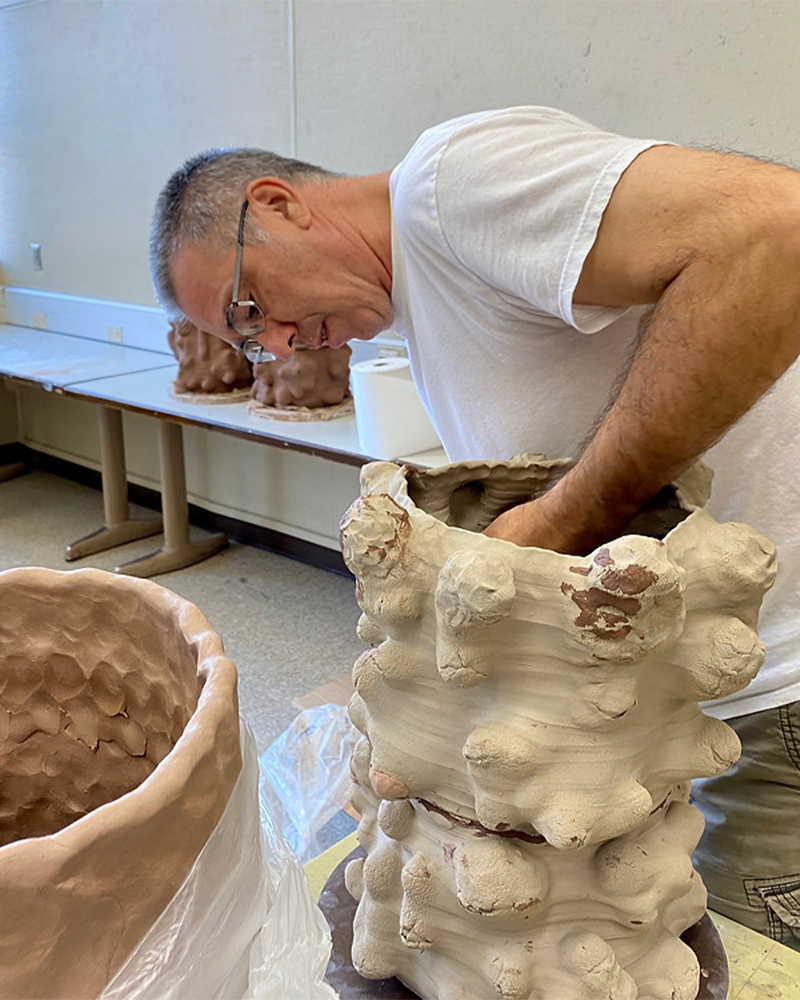
Vince Palacios (b.1961) is an American ceramic artist born in Flint, Michigan. He received his Masters in Ceramic Art from the New York State College of Ceramics at Alfred University in 1994, and prior to that, in 1992, his BFA in ceramics at California State University at Long Beach. He has been working in the field of ceramic art since 1988.
Palacios has gathered extensive experience as a professor at different academic institutions, such as California State University of Long Beach and Western Illinois University, among others. He is now working as a lecturer in the Ceramics Department at El Camino College in Torrance, California.
His work has been exhibited worldwide and is included in a number of important private collections such as Alfred University Art Museum in New York as well as in the collections of remarkable museums, including the Long Beach Museum of Art, Long beach, California, and The AMOCA Museum of Ceramic Art in Pomona, California.
The development of Palacios' works is derived from unique approach points. Firstly, in the context of materiality, Palacio’s has a complex crafting process through the use of raw glass and ceramic materials. As a result of his multiplex material process, combined with the exploration of geological processes of pyroclastic interactions, heat and chemical reactions, the American ceramicist creates intricate and playful narratives.

New Zealander born designer Sophie Rowley (b. 1986) obtained her B.A. in Fashion and Textile design from HTW Berlin in 2011, and, having interned with Alexander McQueen and Diane von Furstenburg, completed an MA in Material Futures at Central Saint Martins in London in 2014. After graduating she worked for British designer Faye Toogood in London then for and Godrej and Boyce in India. In 2017 she returned to Berlin to set-up her own design practice.
In her work Rowley reveals hidden aesthetics of everyday matter through the experimentation with process, craft and material. She collaborates with the industry by developing bespoke studies and concepts for targeted applications of new materials. Through research and experimentation, she pushes the physicality of materials to their limits, revealing new features and hidden unexpected aesthetics. Using a wide range of techniques, her approach focuses on sustainability and innovative material development.
Her most iconic collection is her ‘Khadi Frays’. The series of textile wall pieces were developed by the designer during a one-year residency in India. They are inspired by the Khadi Spirit, an Indian term which describes the state of illimitable patience. In ‘Khadi Frays’, the repetitive actions of conventional handweaving techniques was reversed. Instead of building up the material thread by thread, a solid block of multiple weaves forms the starting point. Each layer undergoes a carefully calculated destructive process, during which over 10,000 threads are patiently removed, leaving a frayed finish behind. Through eating into these material blocks, multi-dimensional textures are created, gradually dwindling down to the base layer. The differences in weight and tension of the warp and weft lead to subtle variations in shade and dependent upon the perspective angle, reflections on the surfaces occur. Through this technique simplistic and modest materials were transformed into intricate arrangements and elegant wall pieces, endeavoring to give a modern twist to textile craft. The experiments with stencils led to different design outcomes made from natural canvas cloths, rough linen fabrics and cottons hand-dyed in Indian turmeric. Rowley and her ‘Khadi Frays’ series were selected as finalists for the renown LOEWE craft prize in 2019.
Another important collection by Sophie, was her Material Illusions series. The concept brought together a collection of conventional waste materials which, having undergone a range of craft and experimental techniques, came to appear “nature-simulating”. With these bespoke material studies and concepts, she helped brands repurpose their own waste in unique and experimental ways, which look beyond the standard aesthetics often associated with recycled materials.
A continuation of her Material Illusions series was her Bahia denim collection. Rowley was commissioned by Nissan in 2014 to develop her Bahia material into a dashboard, which was showcased in a Tokyo as part of an exhibition focused on innovative materials. Material Illusions won the Surface category of New Design Britain Awards 2015, and in the same year, Rowley was commissioned by David Chipperfield Architects to create bespoke material study for the Water Bar at Selfridges department store, London.
Her work is featured in Radical Matter: Rethinking Materials for a Sustainable Future, published by Thames & Hudson in 2018, and was exhibited as part of Poème Brut at Design Museum Gent in the same year.
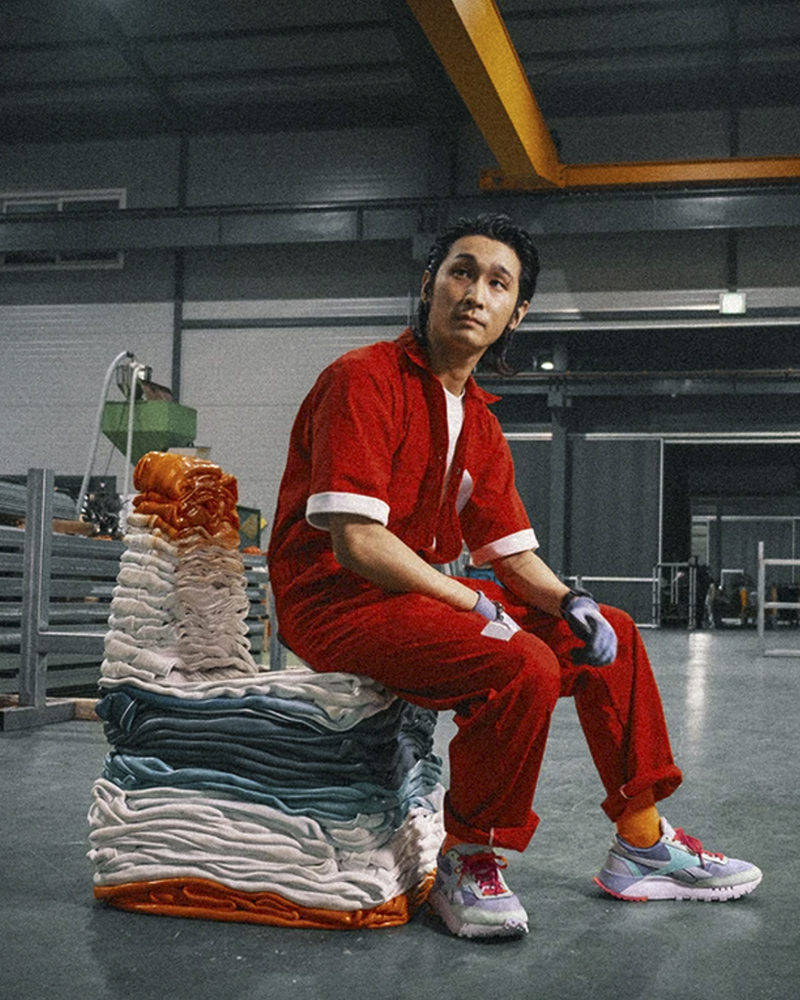
Youngmin Kang (born 1969 in Seoul, South Korea) studied painting (BFA/MFA) at Seoul National University and studio art (MFA) at the University of Texas at Austin. He has shown his work in solo shows at Gana Contemporary, Space CAN, Youngeun Museum of Contemporary Art, Project Space Sarubia, all South Korea and O’Kane Gallery, Houston. Group exhibitions include National Museum of Modern and Contemporary Art, Seoul Museum of Art, Reverscape, Jeju Museum of Art, Seoul International Photography Festival, and Gyeonggido Museum of Art, all South Korea.
Youngmin Kang transforms images and objects captured from digital media, architecture or cultural phenomenon into different contexts by expanding the limits of a particular media through changing the format of the information contained within. When modified into a different space, dimension, scale, and media, his provides a moment of clarity about the original medium and references. Specific meaning in each work emerges through the detailed process of manipulation and can be associated with cultural, socio-political, and identity issues.
The designer uses his designs to demonstrate how the garbage we generate can be turned into something of great value. He is writing his legacy by pushing the limits of design and giving objects a new life. As a member of the Seoul-based collective 1S1T, Kang is changing our view of what we think is just trash. In his opinion, he not only creates objects full of beauty, but also things that are representative of his generation.
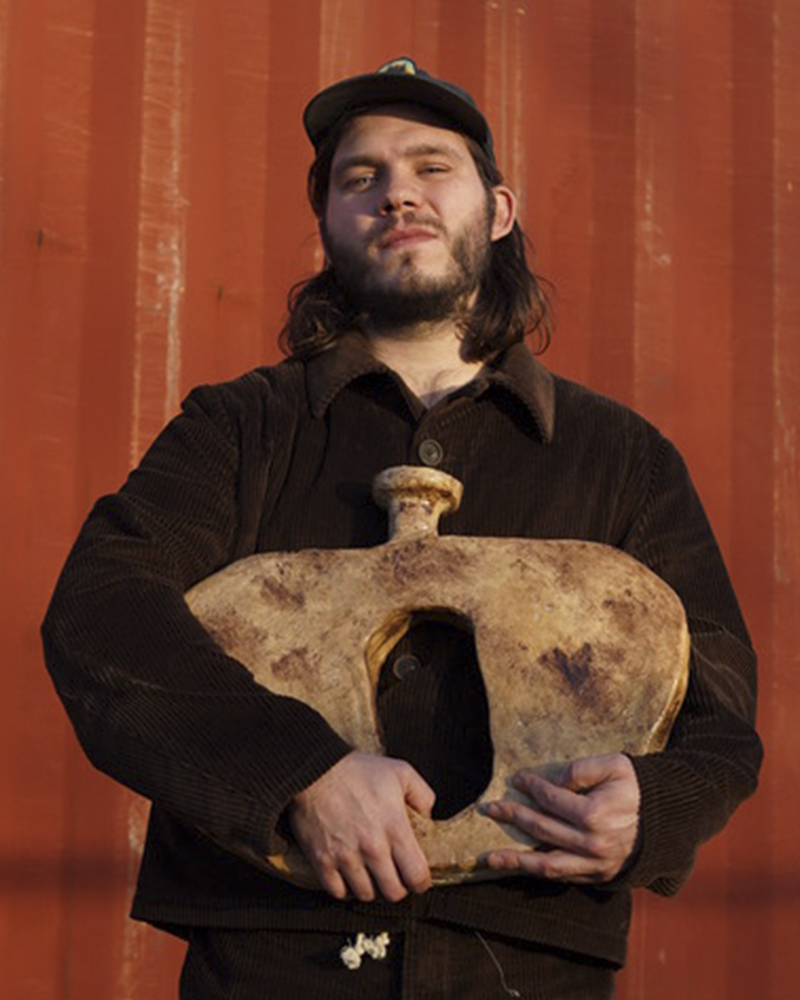
Willem van Hooff (b. 1992, Holland) sees himself as a modern craftsman. After graduating from the Design Academy in Eindhoven in 2018, he opened a design studio in Eindhoven. He achieves a raw style by availing of primitive techniques. He often works with traditional machinery, methods, and existing products. His work breaths a new, exciting life into traditional materials.
Van Hoof's ethos maintains that modern production lacks soul, something which Van Hoof is passionate about. The craftsman believes that the coronavirus pandemic has uncovered people's appreciation of the smaller things in life.

Embracing craft in the digital age, Rollo Bryant (b.1996, UK) specializes in working techniques that merge freehand sculpting with computational software. Focused on projects that create positive environmental change, while promoting the idea that even with this new challenge, design can still be as appealing and versatile, if not more so.
With a distinct focus on material and lighting innovation, Rollo’s goal is to create works that change perception, invite intrigue and raise poignant topical discussion. His fascination with naturally formed organic structures has led to an aesthetic identity of similar character and taste.
Optimistic about design intervention as a means to address ecological neglect, Rollo’s most recent project ‘Urban Stem’, attempts to bring this conversation into the spotlight, by imagining a future where we are brought closer to the biosphere. Highlighting a number of key problems with the ways we light our cities, the project explores ideas to mitigate our impact and prioritize an alternate agenda for urban design.
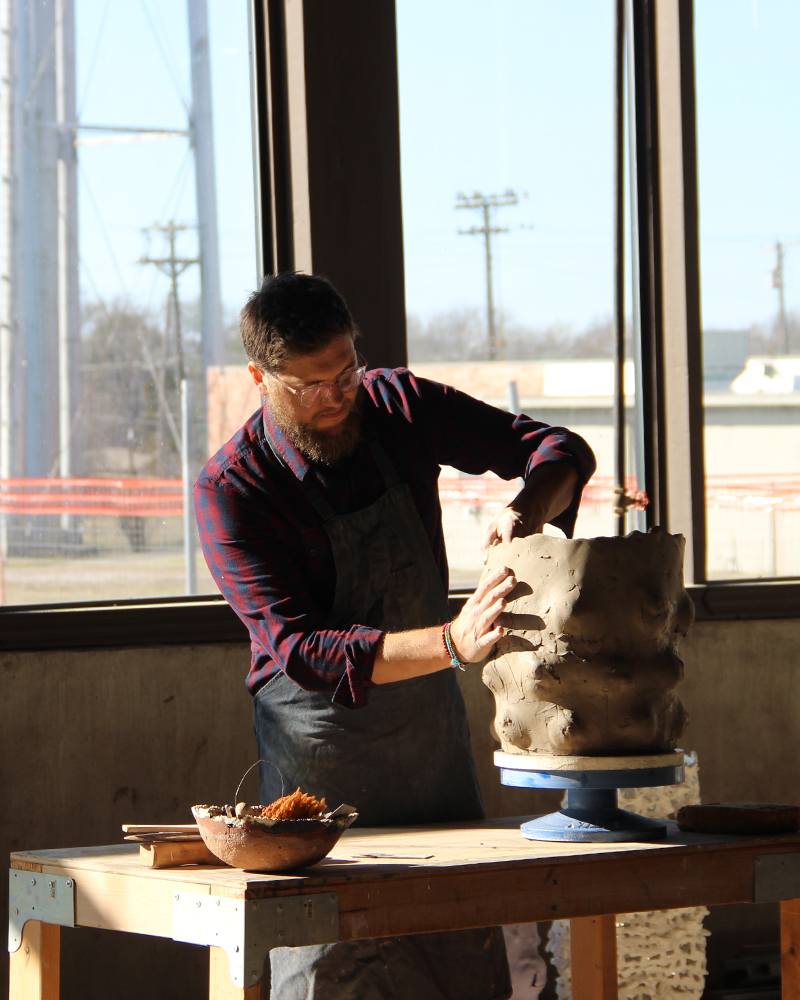
Adam Knoche (b.1986) is an American ceramic artist. He received his BFA in Studio Art at Ball State University, in 2010 and his MFA degree from Southern Illinois University of Edwardsville in 2014. Adam began his career at Greenwich House Pottery in New York City where he was employed as Studio and Fabrications Manager, he has since opened his own studio practice in Mckinney, TX.
The artist’s approach to creating ceramics is derived from materiality, experimentation, memories, and travel. He employs both traditional methods of making ceramics and non-traditional methods that he has researched and developed over the years of working in clay. Knoche is captivated by the color, texture and sensation that clay offers, fascinated by the power it has to be flimsy and engraved by the marks that time or circumstances have ingested into it. The clay is able to capture the movement of the artist's hands, giving it shape and life, as opposed to being transformed into a hard and sturdy structure, the result can be an extremely vulnerable composition that can be easily broken. Knoche emphasises the broken or fractured, and rather than seeing it as a mistake, he subverts it so that the clay is manipulated in a way that accentuates these flaws through the use of pulverizing clay into powder to create fractured and raw surfaces. This is a new technique that gives his work a unique and authentic aesthetic. The artist believes this visual element gives a sense of introspection to those who approach his work.
Adam’s process of working stems from a decade of research, continuous development and experimentation; his most recent collection developed in the early months of 2022 accesses the voice of ceramic material with a new method of research that focuses on raw, pulverized ceramics. The process is the culmination of decades of ongoing research to explore the boundaries of alchemy with dry ceramic materials as an art form.
The “Bleached” series , designed for the Texas based ceramic artists first European solo show at Side Gallery, is a series created as an abstraction of Knoche’s perception of contemporary culture. The notion of “denaturing” and our desire to create order and subdue our environment contradicts the very rationale of our existence.
“I derive my conceptual ideas from environmental and political landscapes and respond to my surroundings in whichever setting I find myself in, both physically and mentally.”
To bleach, literally denatures life and living organisms and creates sterility which is far removed from the wild and natural design of our environment. The series shows raw, vulnerable, and exposed surfaces. Cracks, fissures, and the broken are celebrated as imperfect and organic. Drippy glazes and heavy texture give the viewer a tactile experience that is lost in most of our daily encounters.
Over the last decade Knoche has participated in a number of group shows and has represented the United States at the Korean International Ceramic Biennale and at the Annual exhibition at the National Council of Educators on the Ceramic Arts Conference and has been featured in a long list of publications such as Art Ascent Magazine, Ceramics Monthly, Ceramics NOW, Studio Potter, Architectural Digest, Journal of Australian Ceramics. He has been awarded the Emerging artist in Ceramics Monthly award.
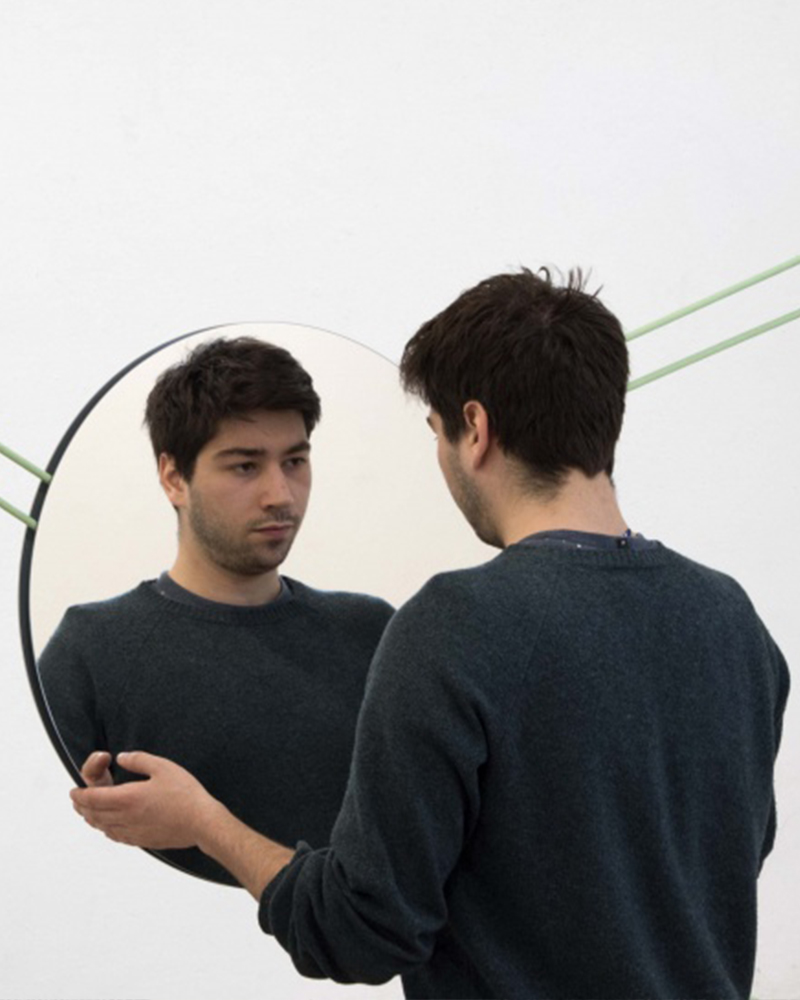
Lukas Saint-Joigny is an experimental designer based in Paris. He graduated with a MA in Contextual Design at the Design Academy Eindhoven in 2018. He has an experimental way of making objects based on an exploration of shapes and materials.
His hands-on process enables him to deal with color and texture to create intriguing objects that communicate with the user and push him to reflect on the world surrounding us. Greatly inspired by science fiction, comics, and sciences such as geology and biology, he doesn't follow the archetypes of objects but tries to stimulate the imagination. He intends to focus on the research of a new aesthetic based on the unexpected and the strange.
Since graduating, he has produced his Ore Collection, a series of domestic objects that evoke ore minerals. Through experimental organic shapes and vibrant colors, his objects look alive. The collection reflects his cosmic influences, creating a dynamic aspect portrayed through the forms and their texture, taking the viewer into a fantasy, forcing the imagination. Side Gallery first showed the collection at the Collectible Design fair and then in the gallery's summer exhibition space Casavells.
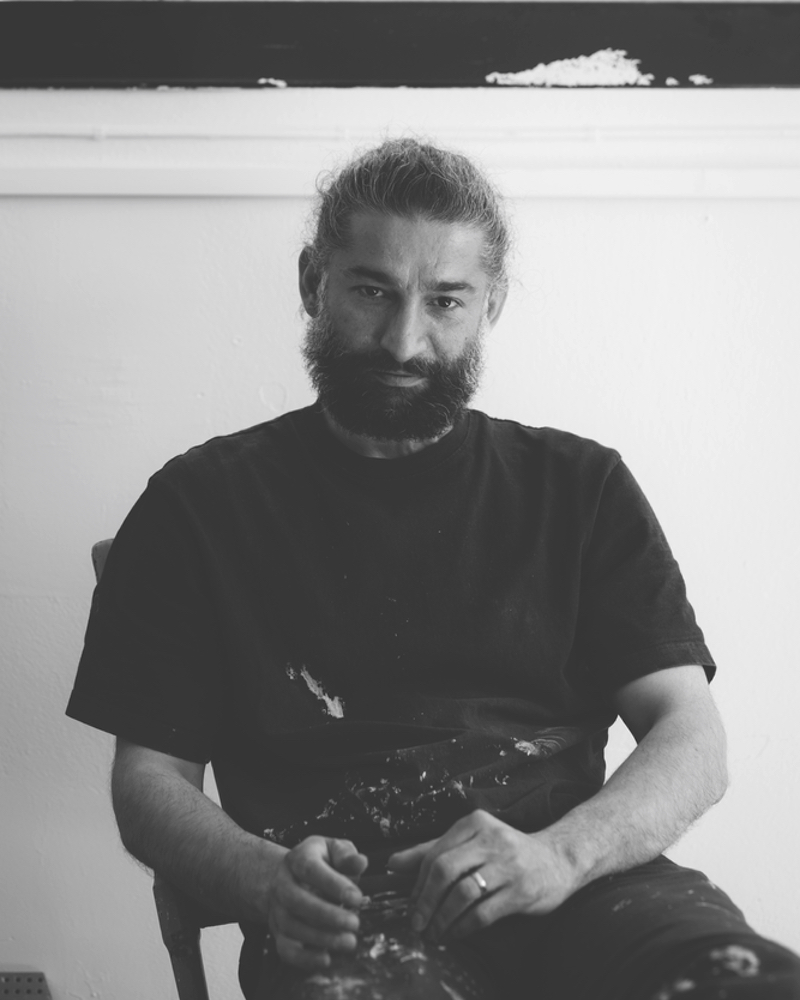
Nebil Zaman (b.1985) is a Kurdish / Norwegian designer living and working in Oslo. After beginning his studies in Art direction and advertising, Zaman took a turn and went to study traditional woodworking and furniture design at the Oslo National Academy of the Arts. Since graduating Zaman has merged furniture making with his fascination and interest in architecture, art and technology. Based on his upbringing and experiences, he explores how our surroundings affect us socially and culturally. His interest in materials, production techniques and visual languages shine through in his work, investigating topics such as function, form, identity and visual culture.
His latest series of laser cut plaster cast MDF furniture forms, place an emphasis on material and texture. Zaman is most intrigued by the materiality of plaster, it provides a sense of freedom, and a loss of control in the final outcome. While there is extreme precision in the digital fabrication techniques to create the armature, the addition of plaster to the process provides an organic element of expression and randomness.
The new collection of works made exclusively for Side Gallery, is a continuation of Nebil Zaman's previous works in plaster, exploring topics such as function, form, identity and visual culture. The scope of his creative process focuses on the combination of digital fabrication and handcraft methods. Zaman digitally draws or searches for 3D models that interest him. Once the designer is satisfied with the model, he sections the design in 2D, then laser cuts or CNC mills the 2D sections to create the parts, afterwards assembling the newly made pieces into a three dimensional object. The structural base then acts as a fixture to build up thin layers of regular plaster and wood glue, leaving the finished object with a smooth industrial finish.
Zaman explores forms and different typologies of furniture, as well as imagining and creating new ones. Certain pieces have clear and specific functions, while others are more ambiguous and open to another possible purpose. The formal language and aesthetics of Zaman’s designs stem from a fascination with ancient civilizations, archaeological encounters, science fiction and futuristic visions. The Norwegian designer won the ‘DOGA Award for Newcomers’ in 2017, and his project ‘Personal Space’ was acquired by Norway’s National Museum in 2019. In 2022 the designer presented work at London Craft as well as being selected for the group show “Matter” Norwegian Presence durning Salone di Mobile.

Faye Hadfield is a ceramic artist from Bath, England. Whilst studying at Bath Spa University, where she specialised in ceramics and sculpture, Hadfield travelled Linz to study at the university of the Kunst as part of her Erasmus Program. After graduating in 2018, she joined the School of the Damned from 2020 to 2021, an alternative art school where she continued to develop her ceramic and sculpture skills, subsequently completing a residency at 44AD Artspace in Bath.
In the spring of 2022 Hadfield will complete her second UK based residency, at “Clay Shed”, a ceramic school in Bristol where she continued to develop a series of pots distinctly emerging as creatures. Their smushy bodies are made up of clay that has been squashed in her hands and precariously built up into the traditional shape of the everyday vase. As an impulsive maker, the artist’s practice is playful and expressive, allowing the pots to take on emotions of their own, they are immediate and endearing. Their faces look back at you and fill the awkward silence. Heavily painted and built up with layers of colour using slips, glazes, oxide and lustre, the pots have been developed through a mark making process which is intuitive, allowing the artist to be carried away, often drawing inspiration from everyday motifs and sometimes painting directly from thoughts.
Hadfield’s most recent body of work “scary pots”, was born from a desire to push boundaries and invert previous work, taking on a dark otherworldly notion. They are oddities that come from a world of their own, with toothy smiles and carved out eyes, their strange mannerisms lead you to ponder their origin. Whilst developing the series during her time at Clay House, Hadfield found inspiration in 18th century Rococo Ceramics and Architecture. This eccentric collection of work consequently produced, aims to embrace the bizarre and the nonsensical - whilst progressing new designs and redefining her current practice. By responding to these Ceramics through stylistic impulses and intuitively recreating shapes in a heavy handed way, the aim is to show the crude qualities of clay and tell stories by directly enhancing the pots surface. Layers of glaze, oxide and lustre run and seep into each other creating surface patterns on the pots, extravagant handles and tree shaped prongs embellished across the pots arouse notions of the natural world, as if the pots have been unearthed.

Virginia Leonard (b. Auckland, New Zealand) is an established ceramic artist. In 1990 she obtained a Bachelor in Fine Arts, from Whitecliffe College of Arts & Design, where she later completed a Masters in Fine Arts receiving a First Class Honours. Her work is recognised internationally, she has exhibited at reputable design fairs, as well as having received various awards, including the First Runner-up Wallace Art Awards, Auckland, New Zealand, in 2020 and the Winner- Main Prize, Officine Saffi Award 4, Milan, Italy in 2021.
Leonard’s ceramic practice is derived from a personal dialogue with her own reality. Her works are representations of her body, they are created as illustrations of the voicelessness of chronic pain and bodily scarring, which in return meets the daily need to articulate and divinise her visual language. The artist provokes connotations of repulsion, with the gritty forms and full of sharp ends of the pieces, whilst asserting that the expression of this harsh reality is something vital, enveloping and honest, which she translates into colour, creating vibrancy and beauty. Painful
Throughout her career in ceramics, Leonard holds that she feasts upon the process and change, enhancing the organic reality of her body, its fragility and its development in a world of flux. In her concept, she stresses that human physicality is not static or closed and that the classical ideal is sterile and impossible, as a result, the artist claims to be excited to understand that she inhabits a "body of becoming".

